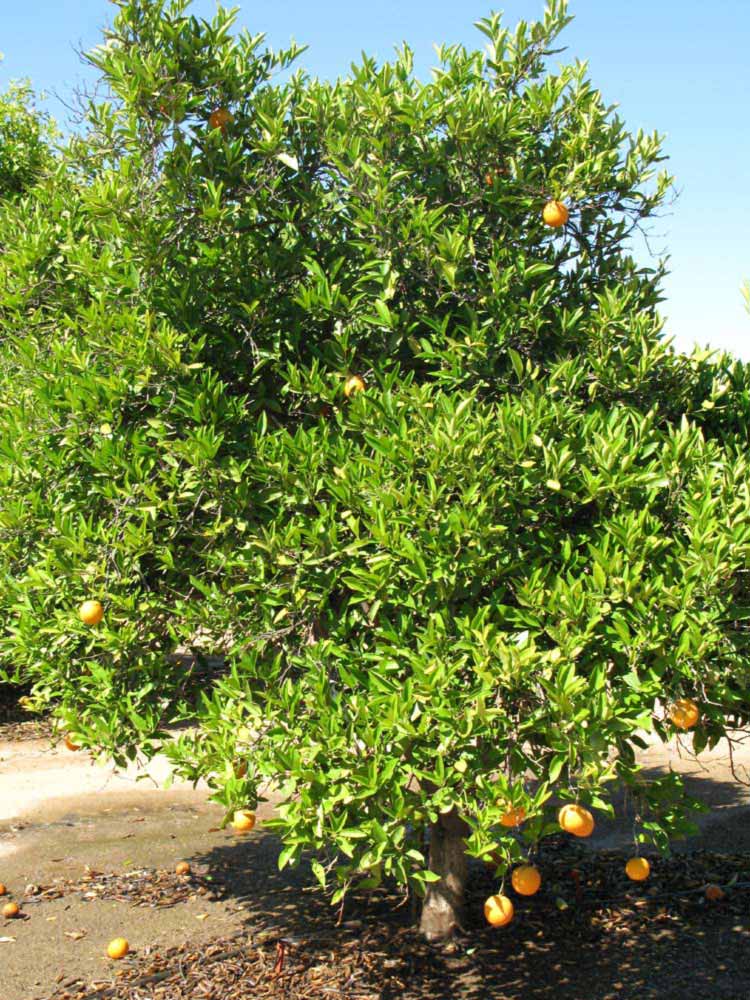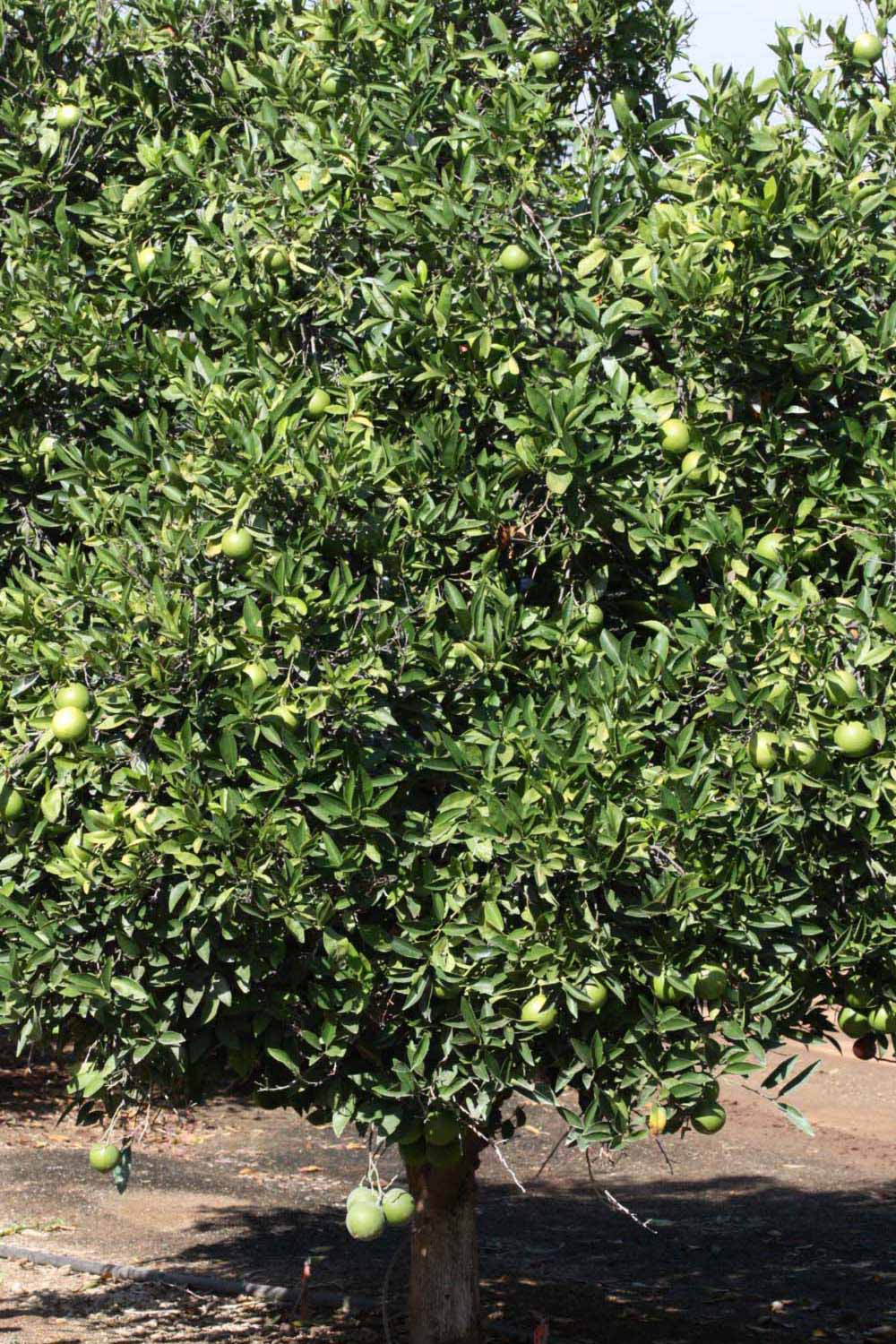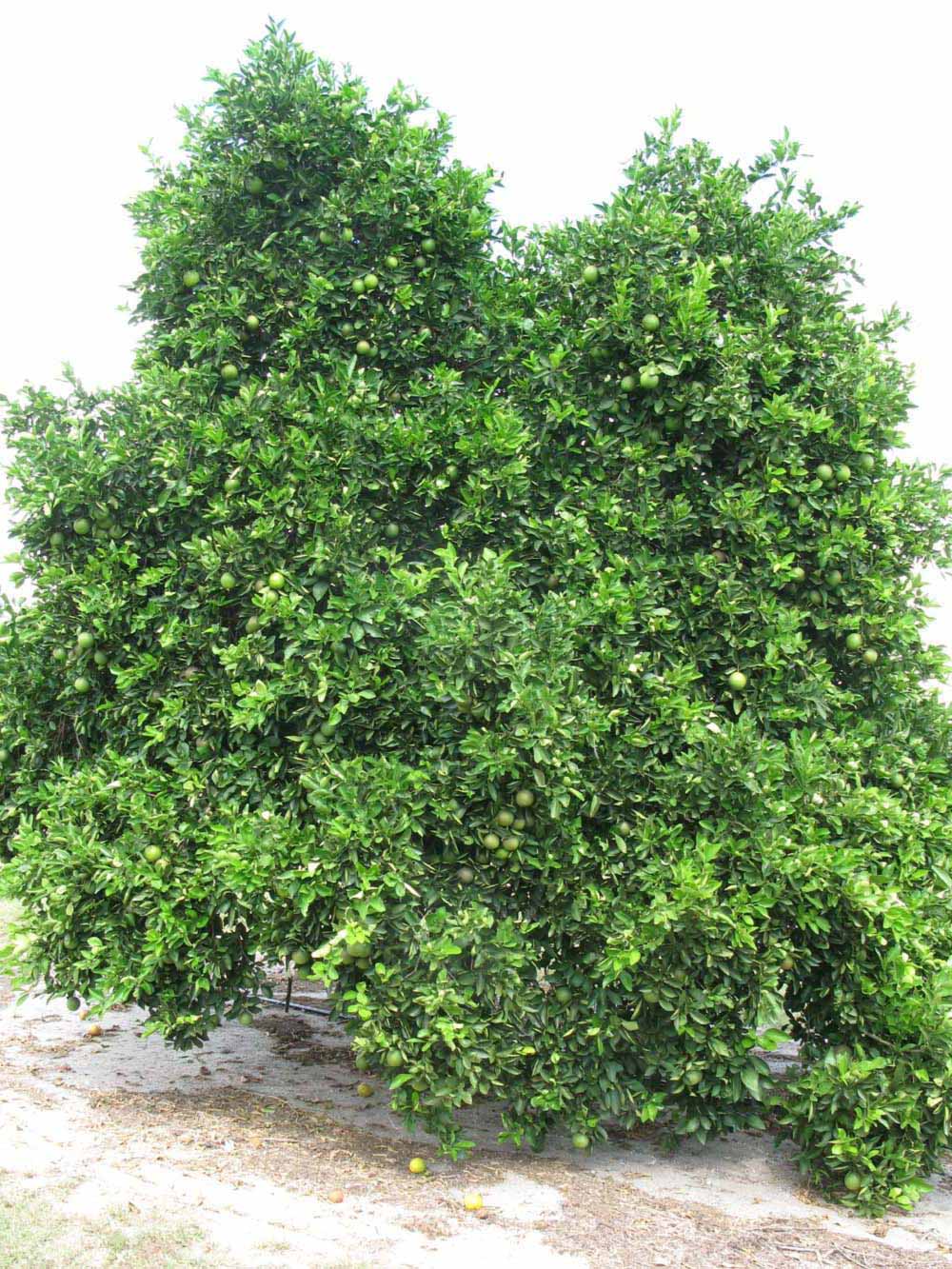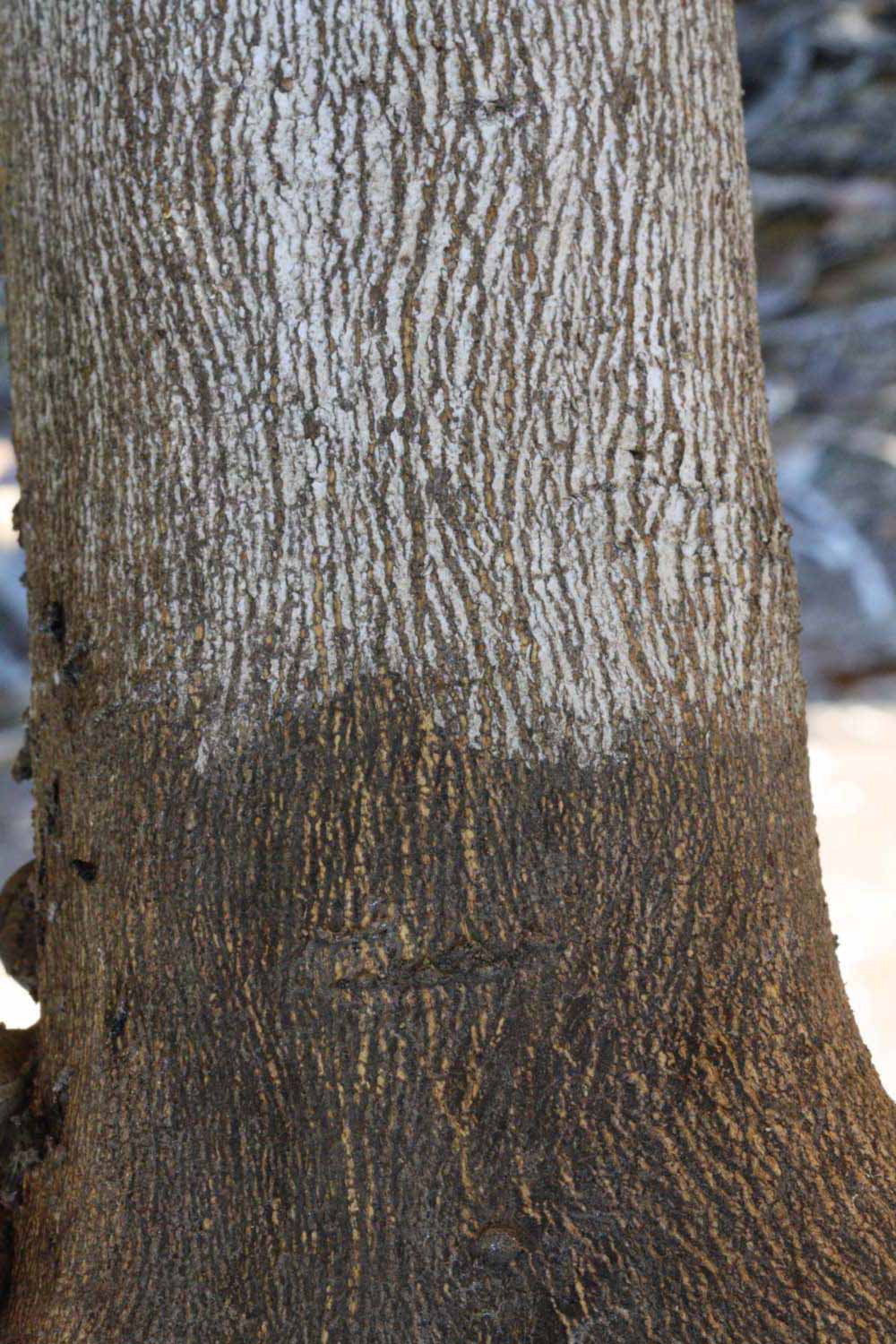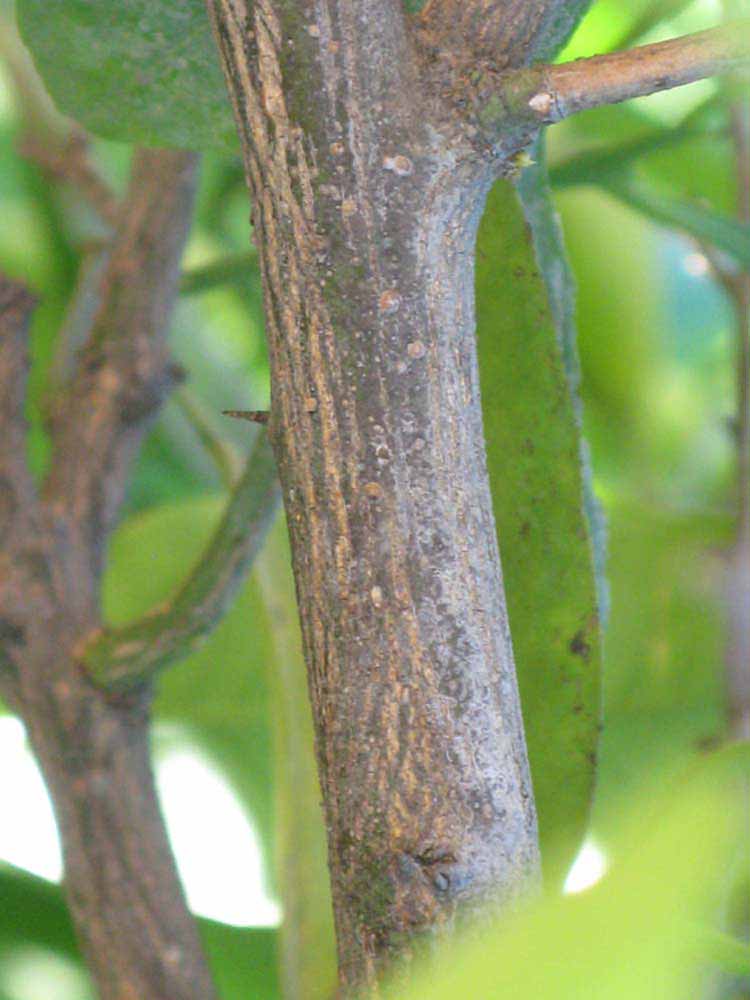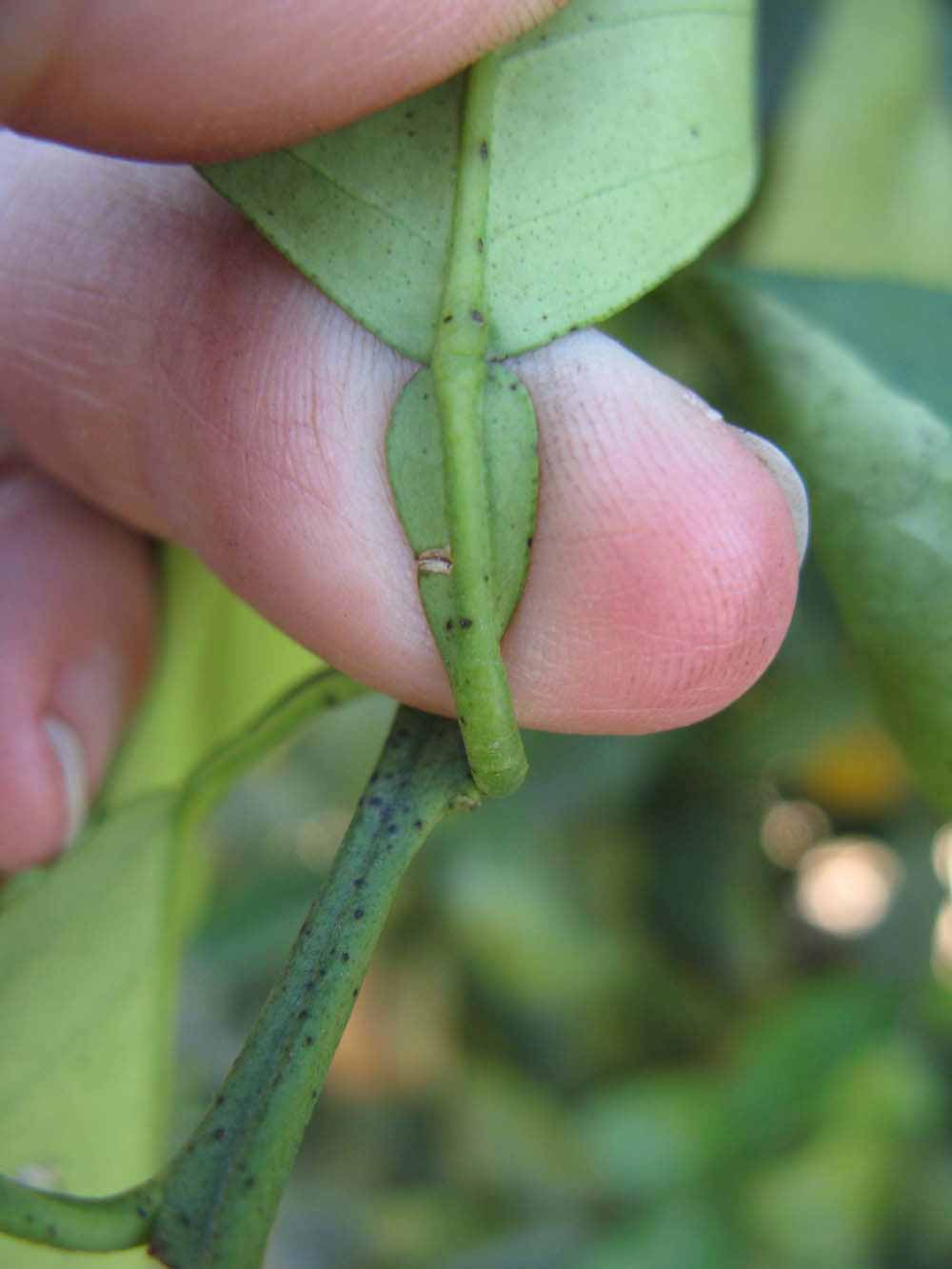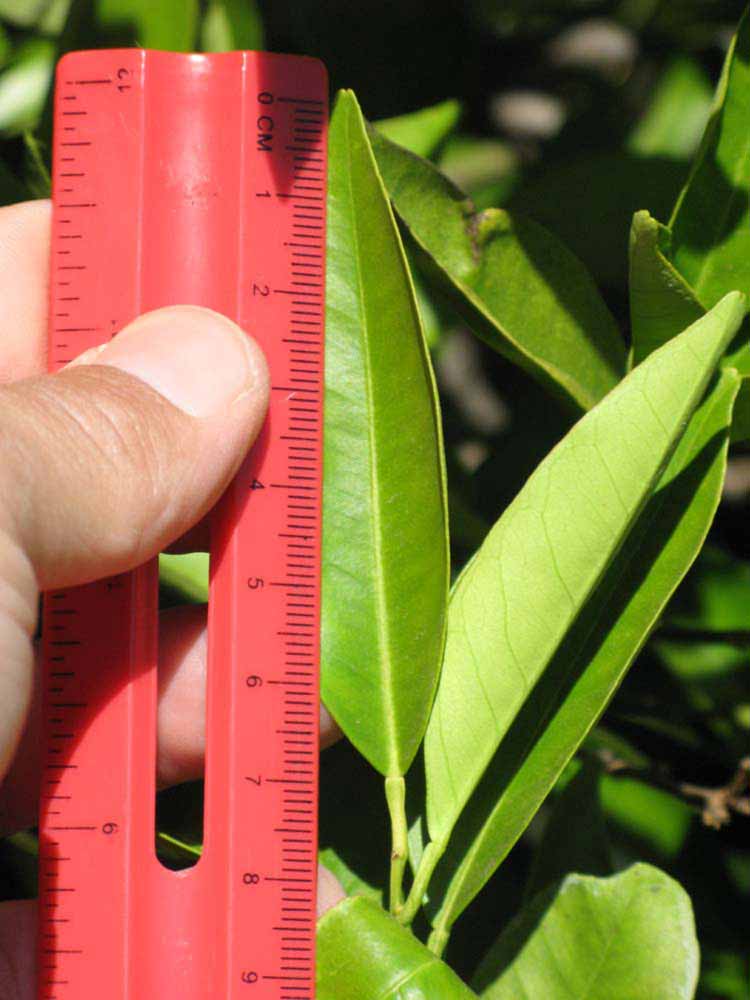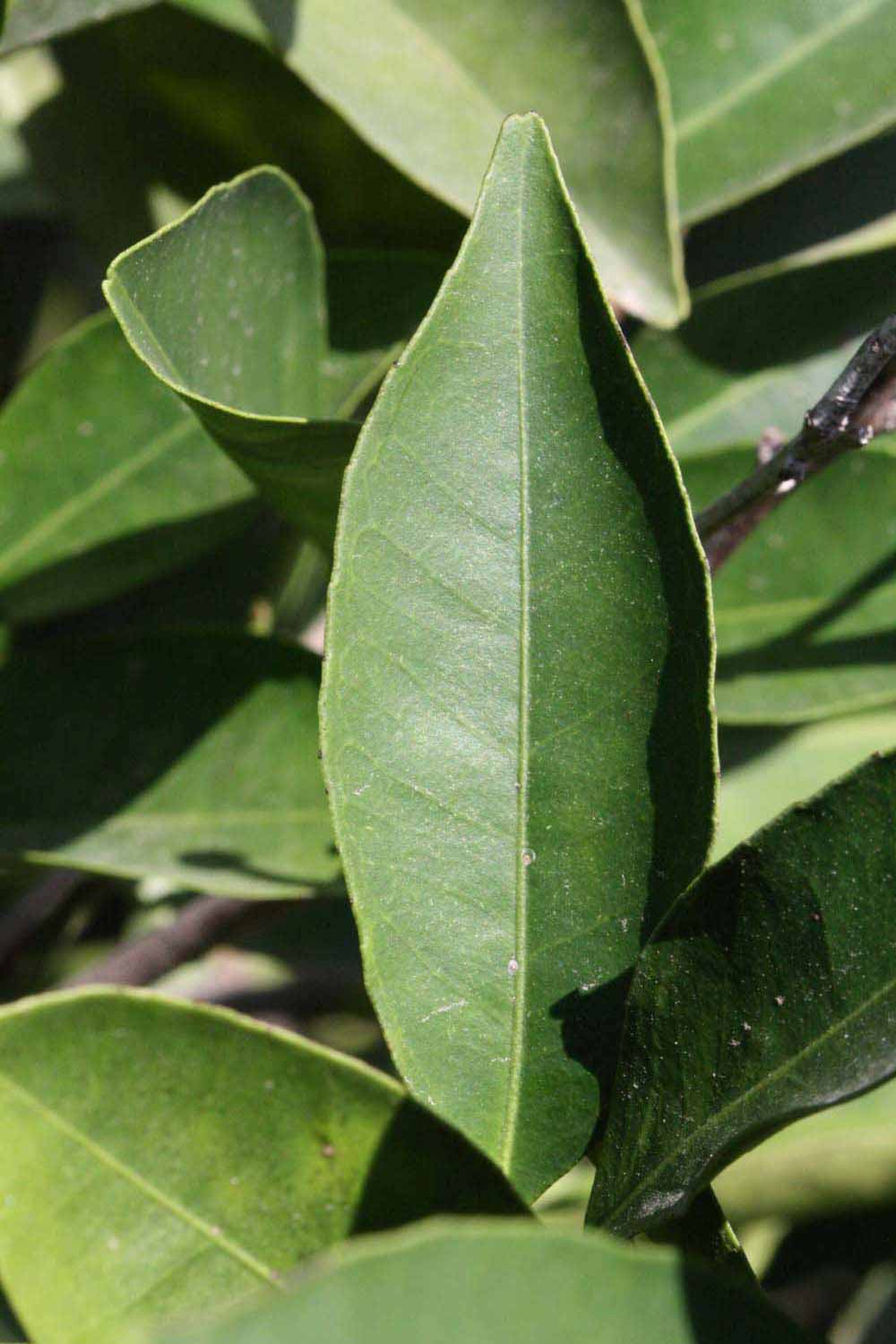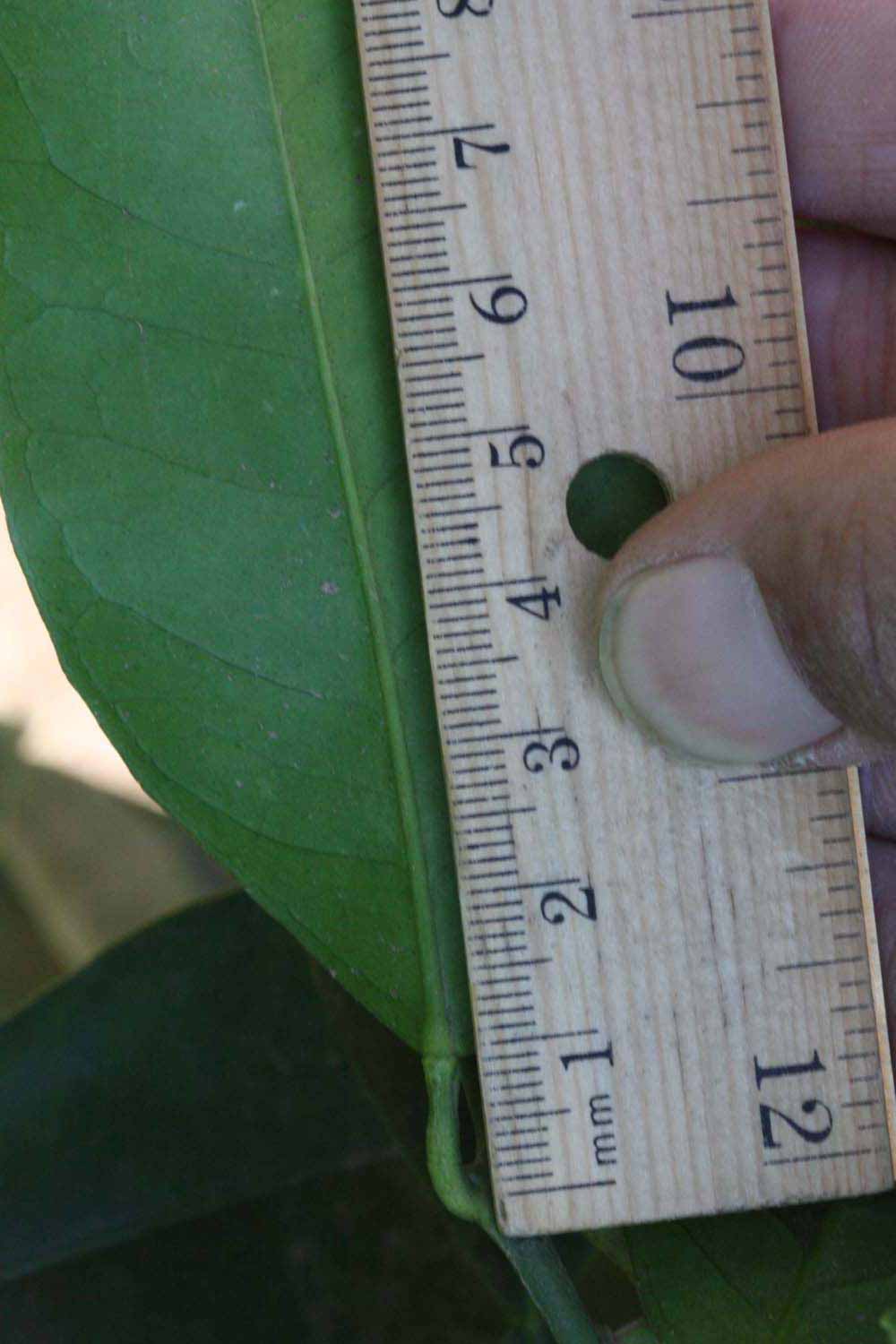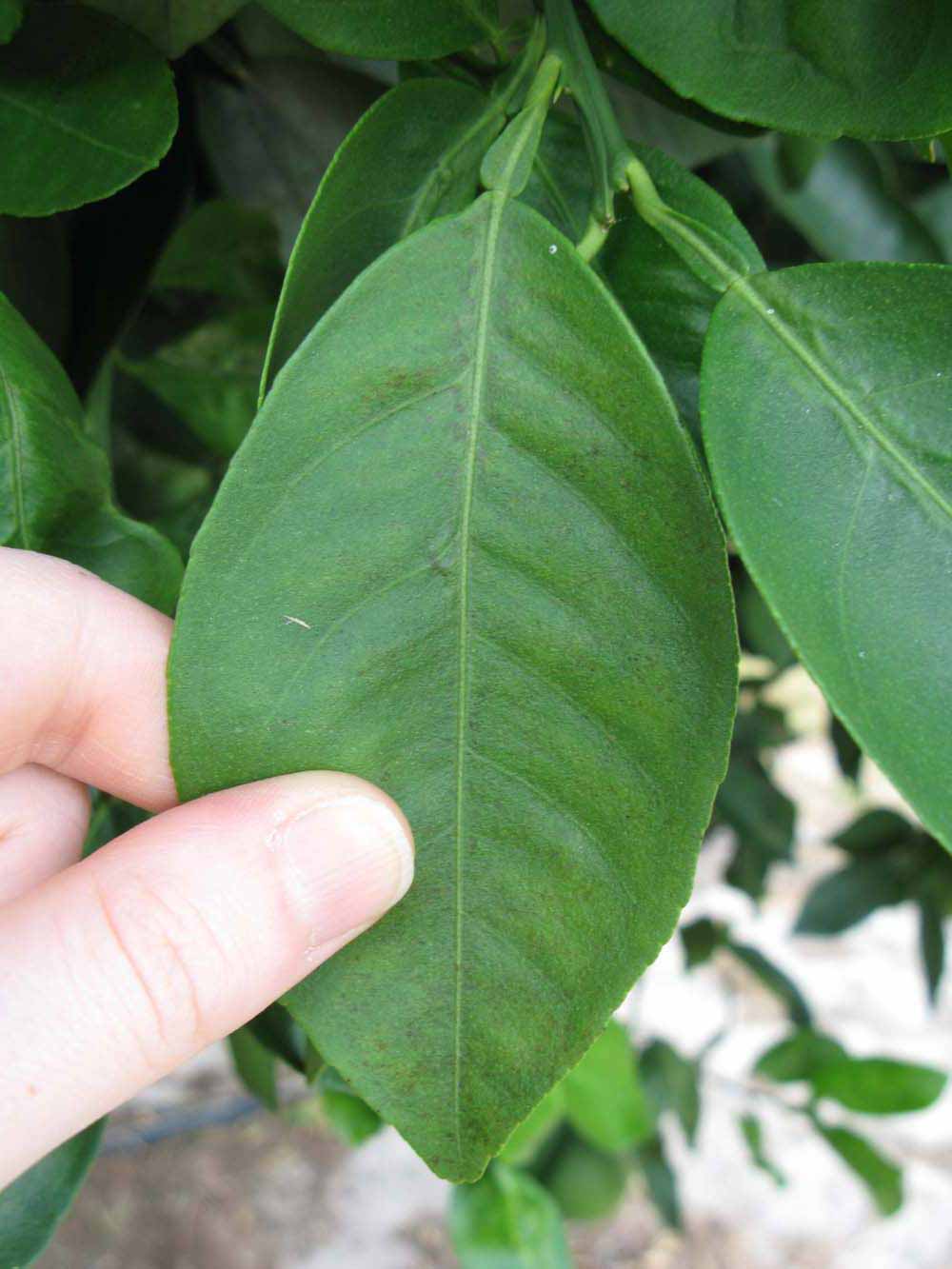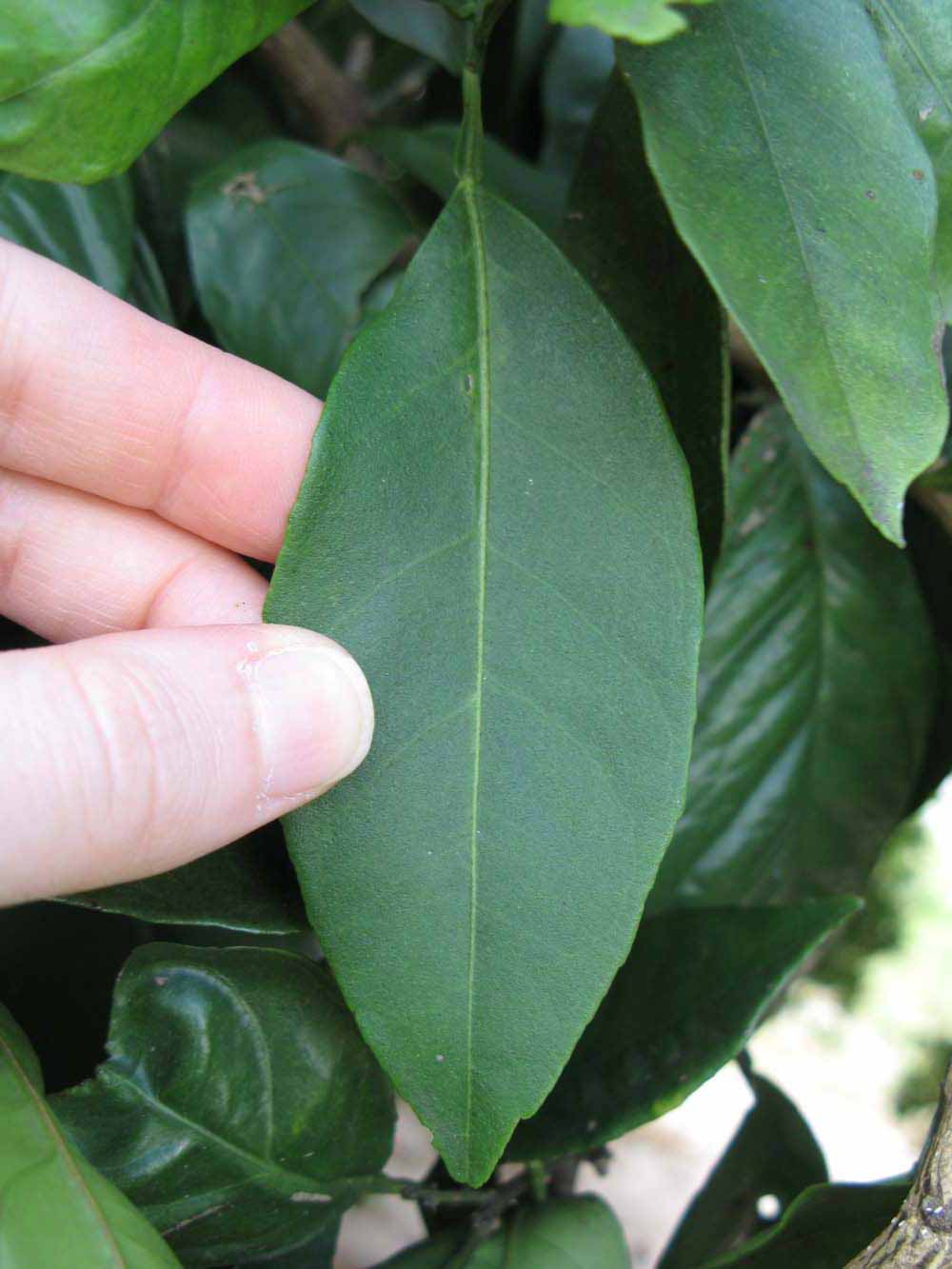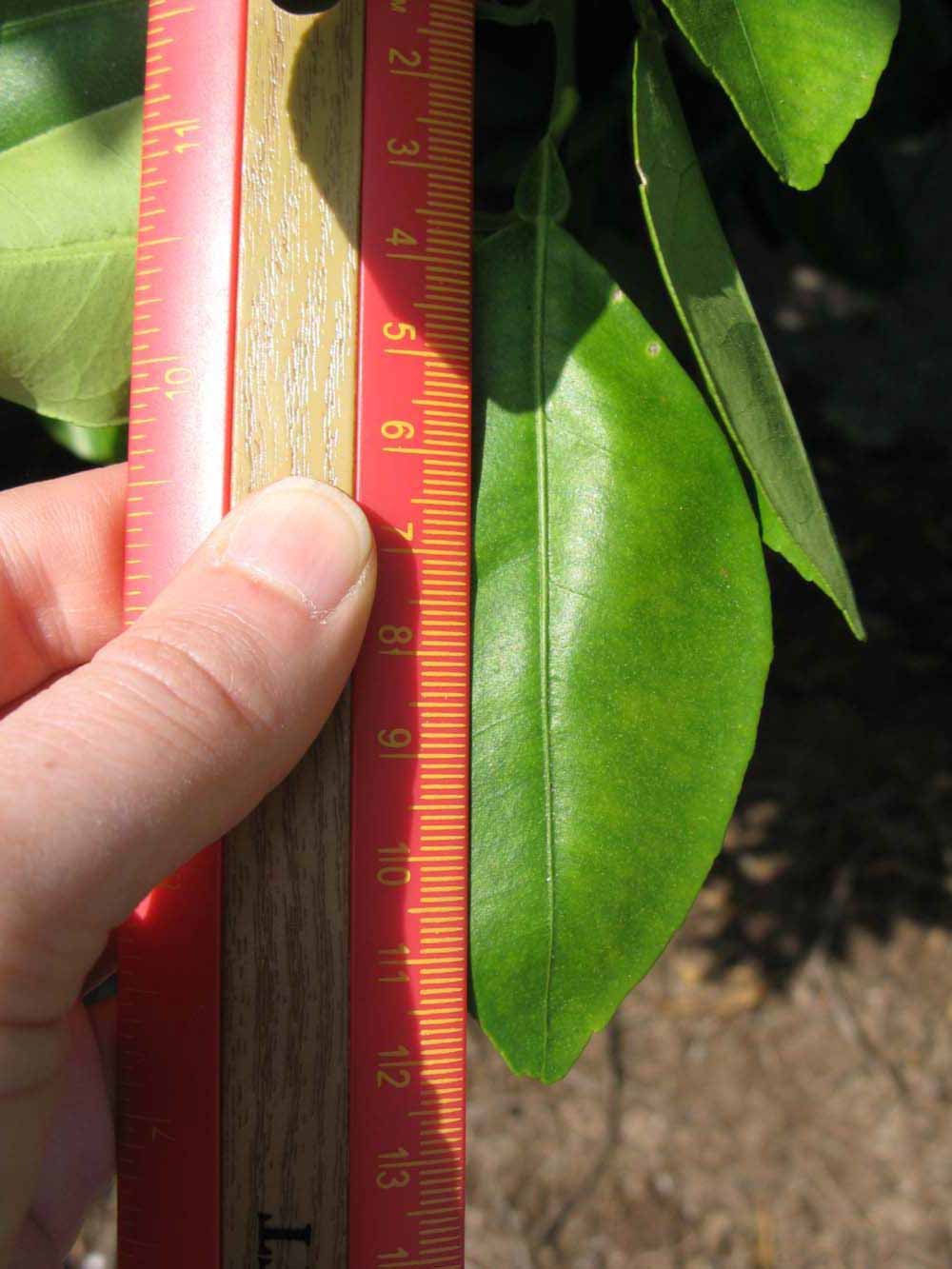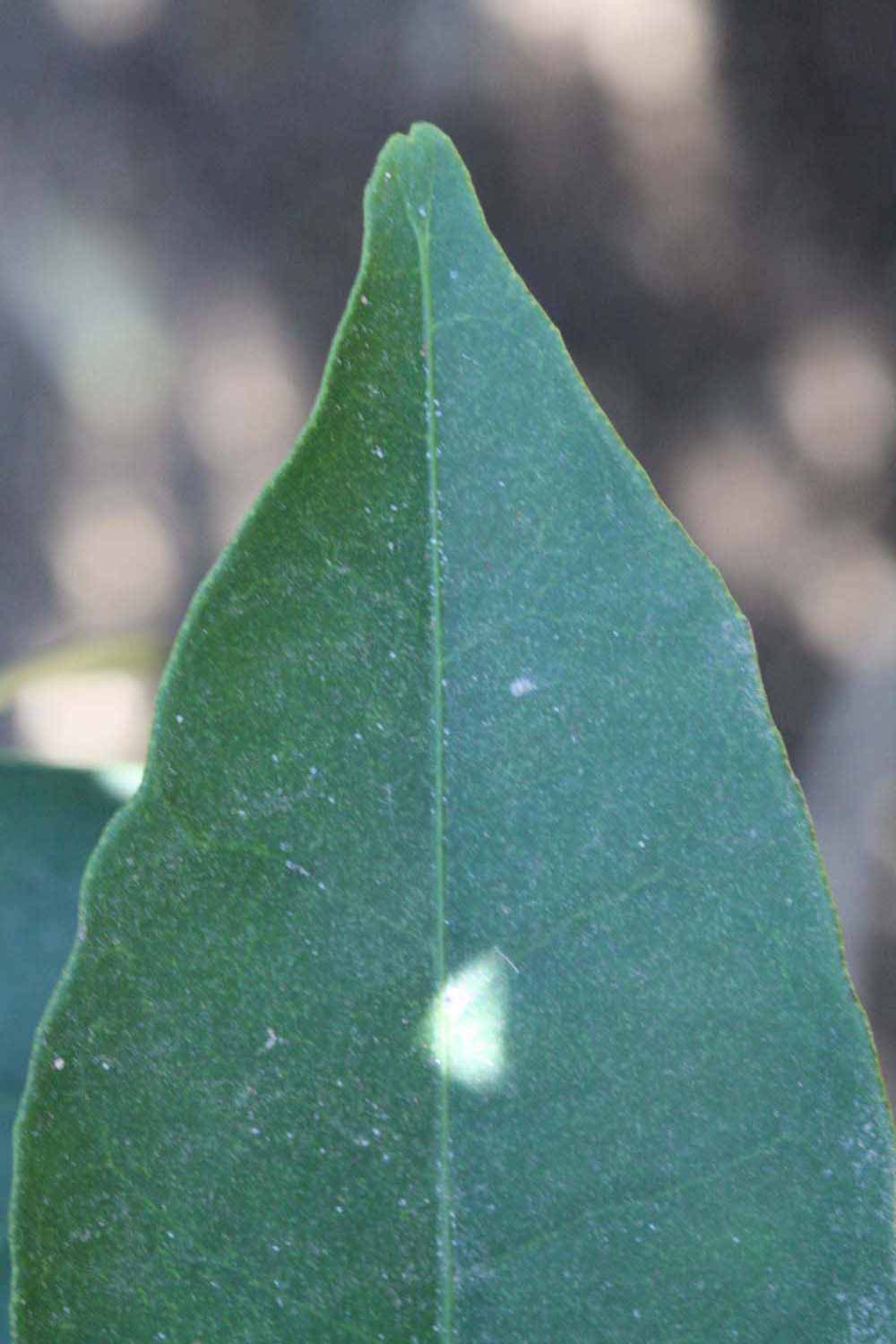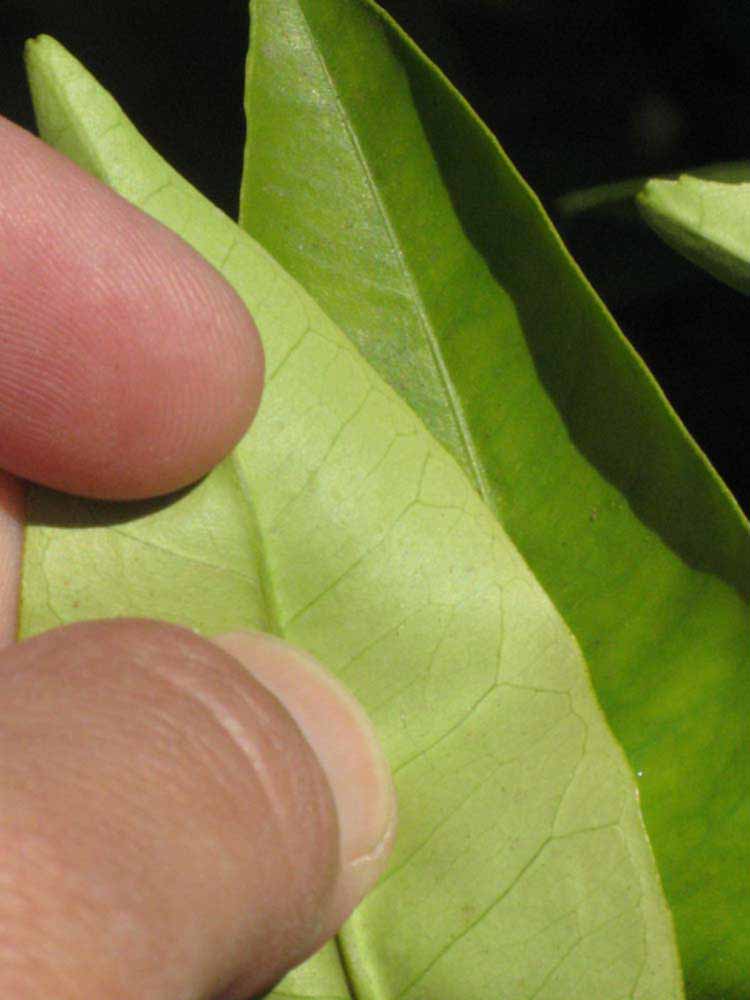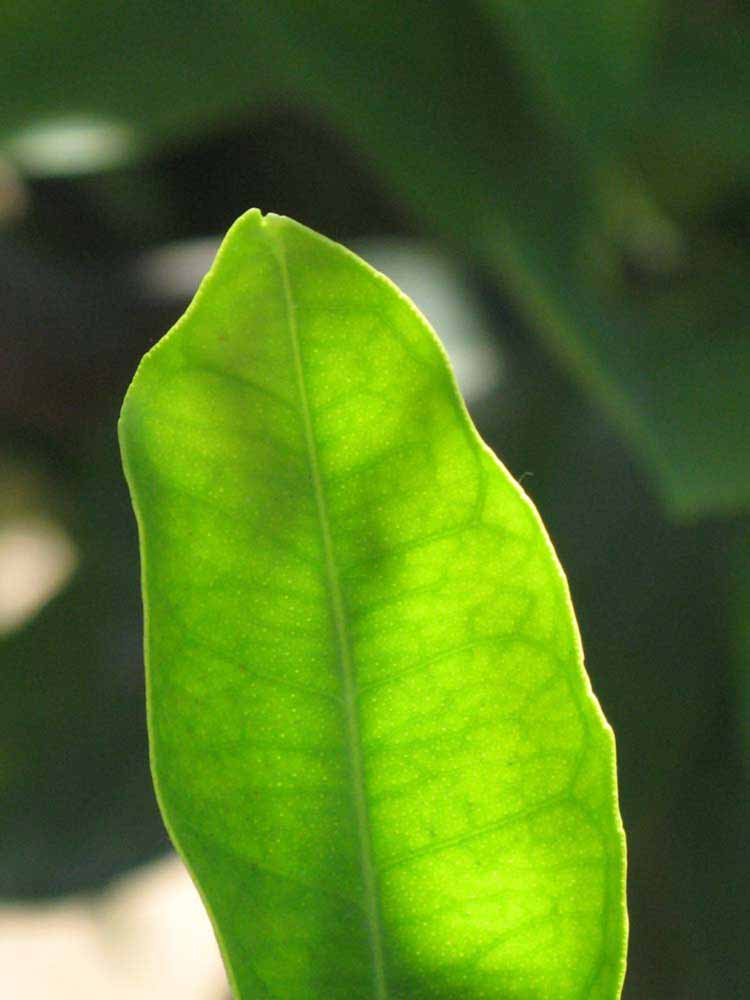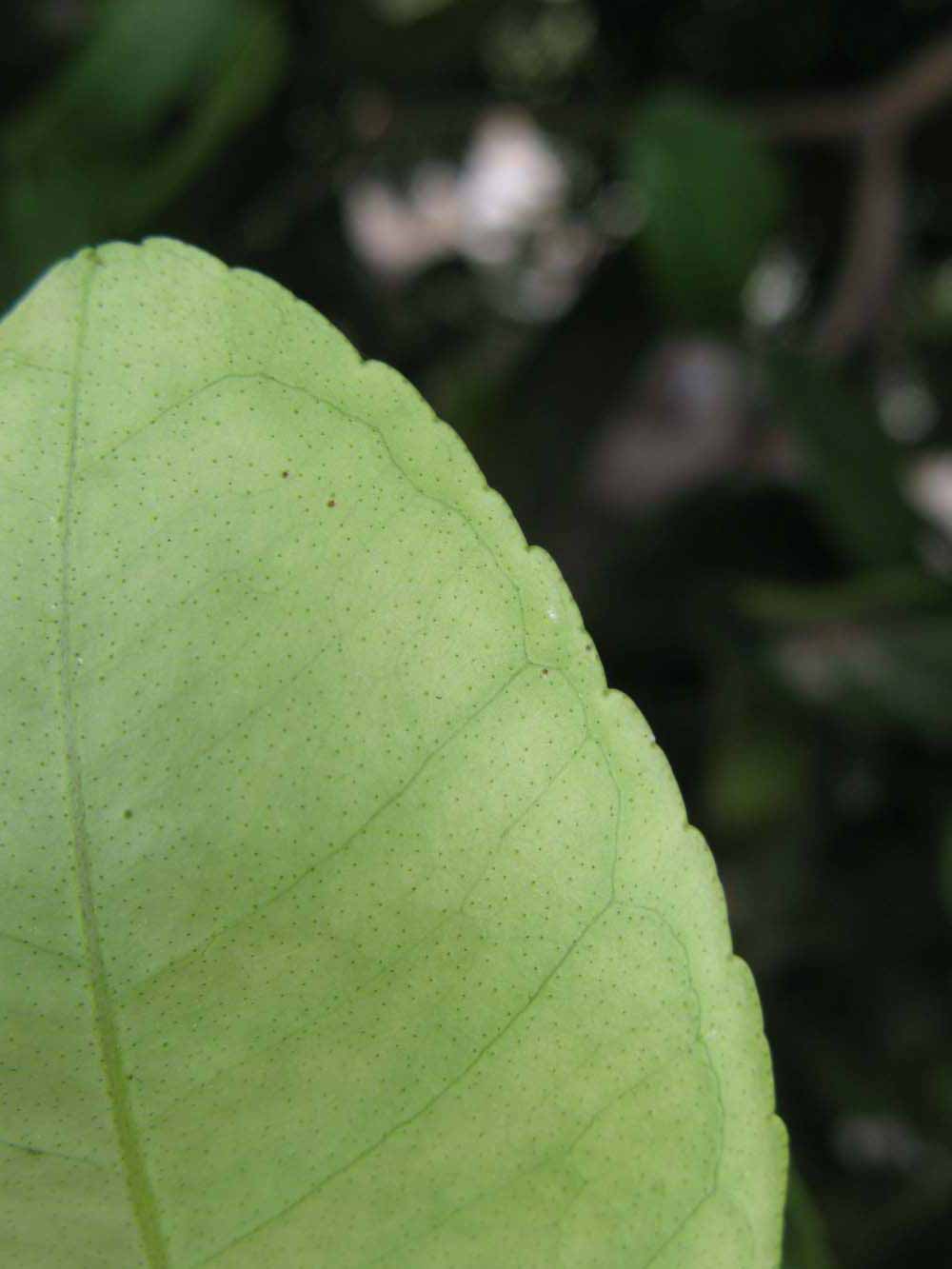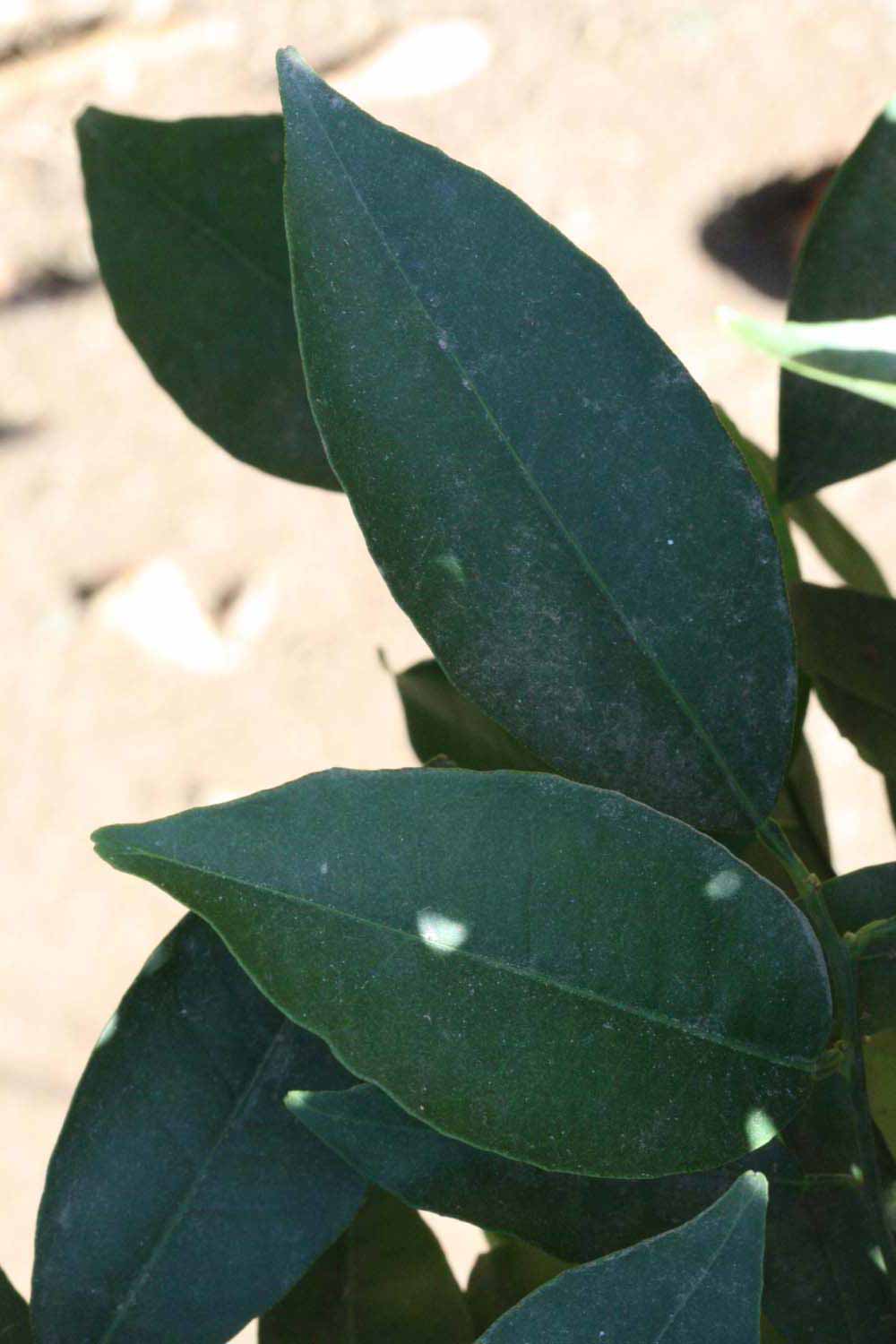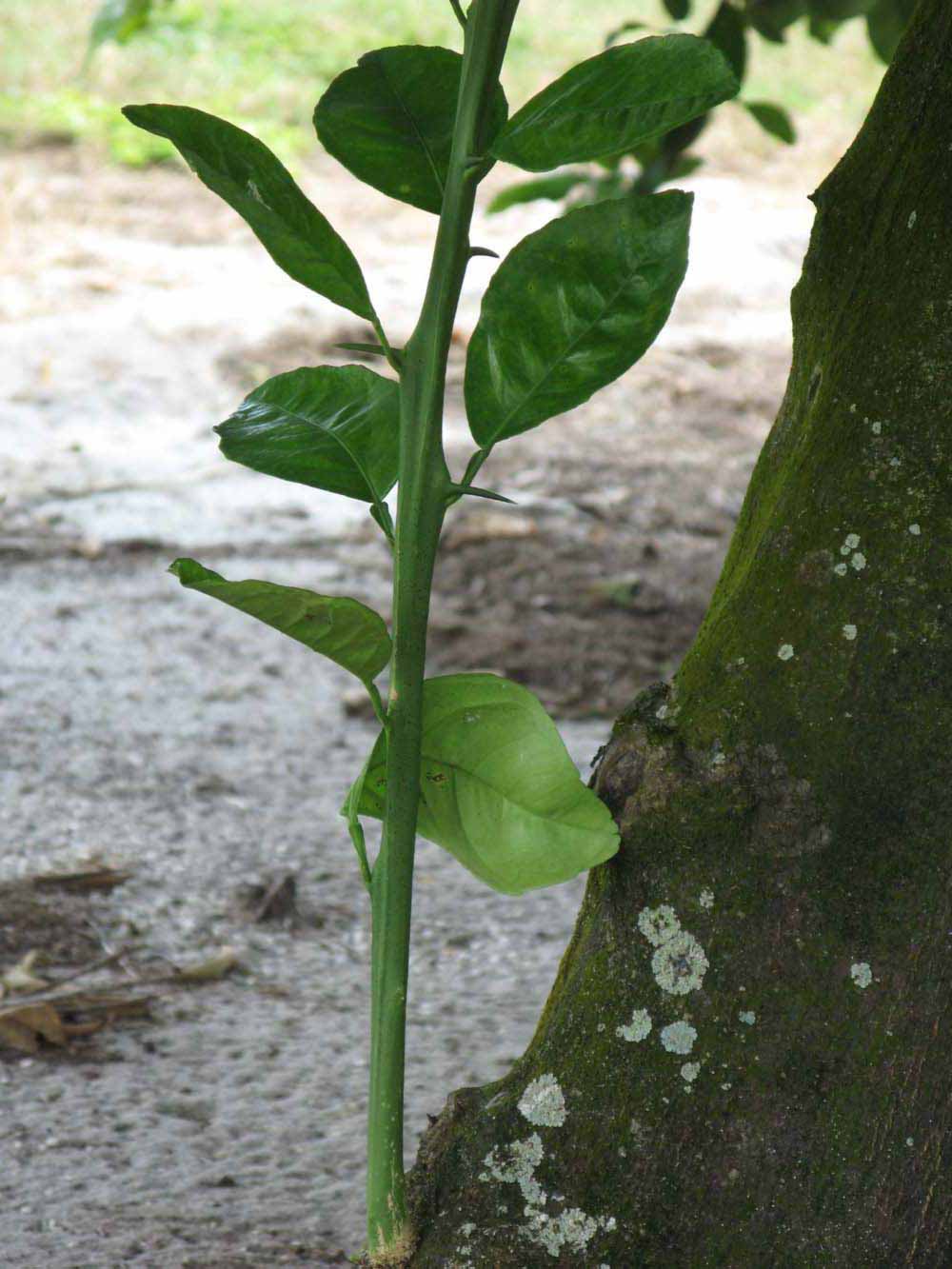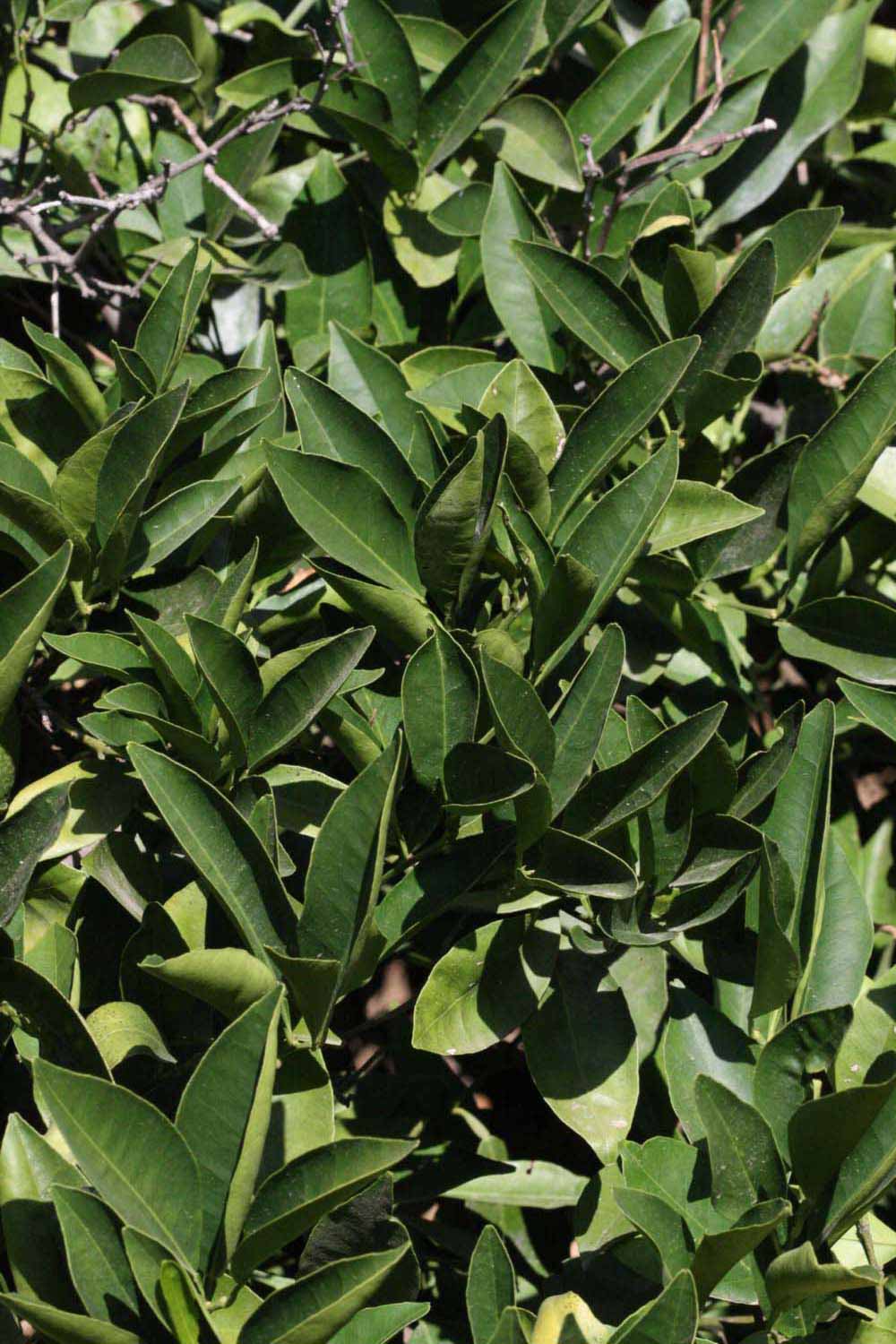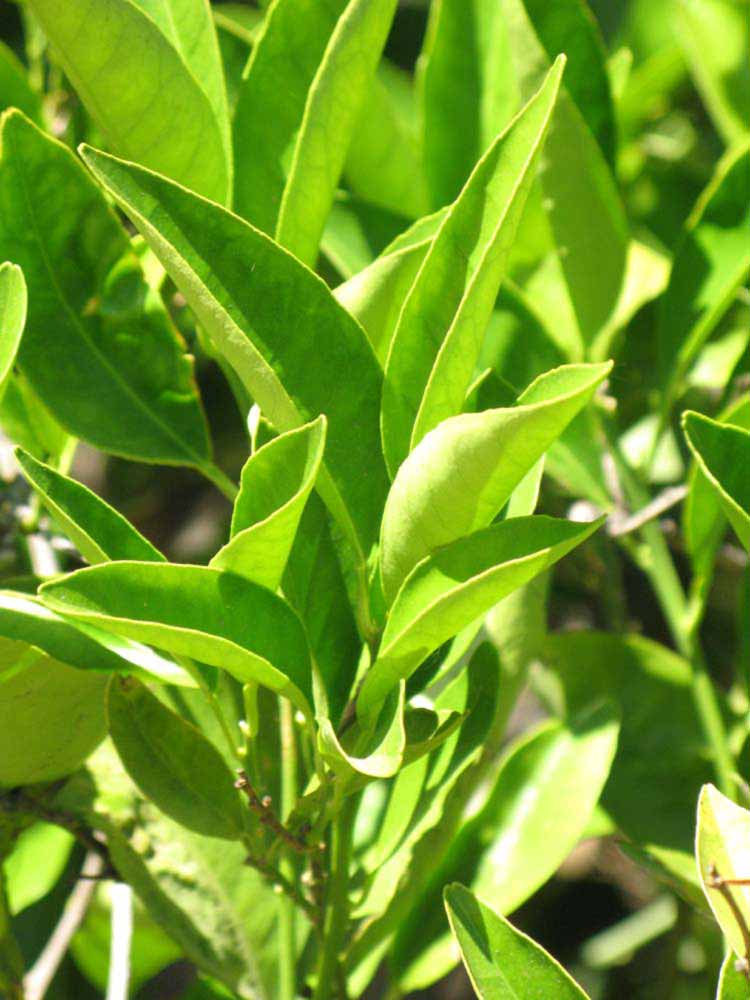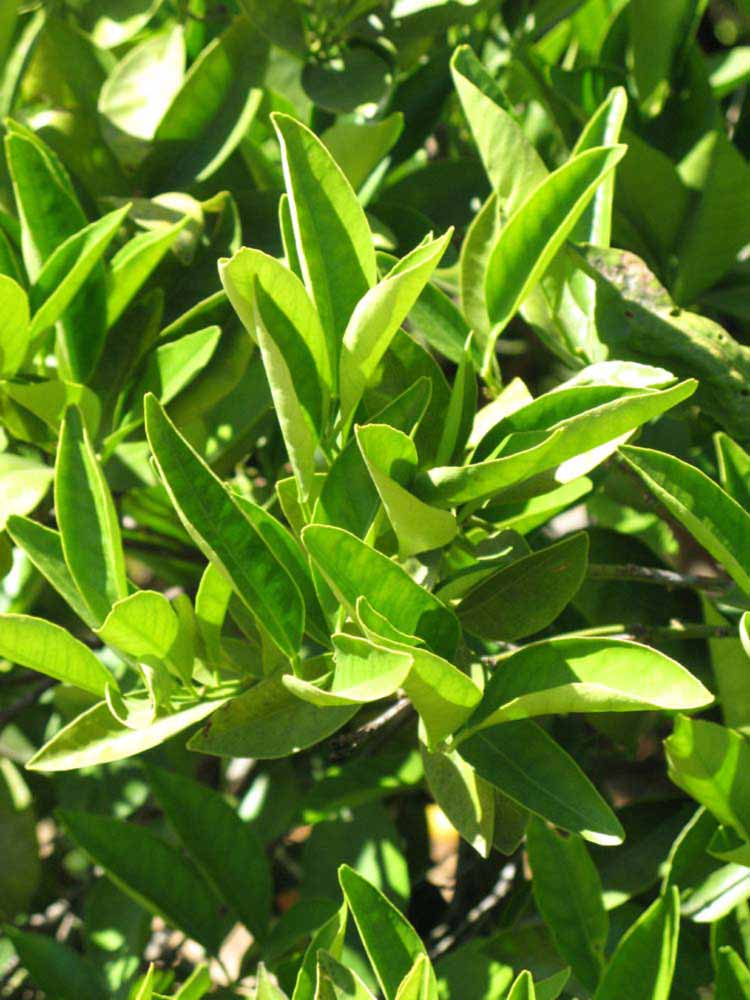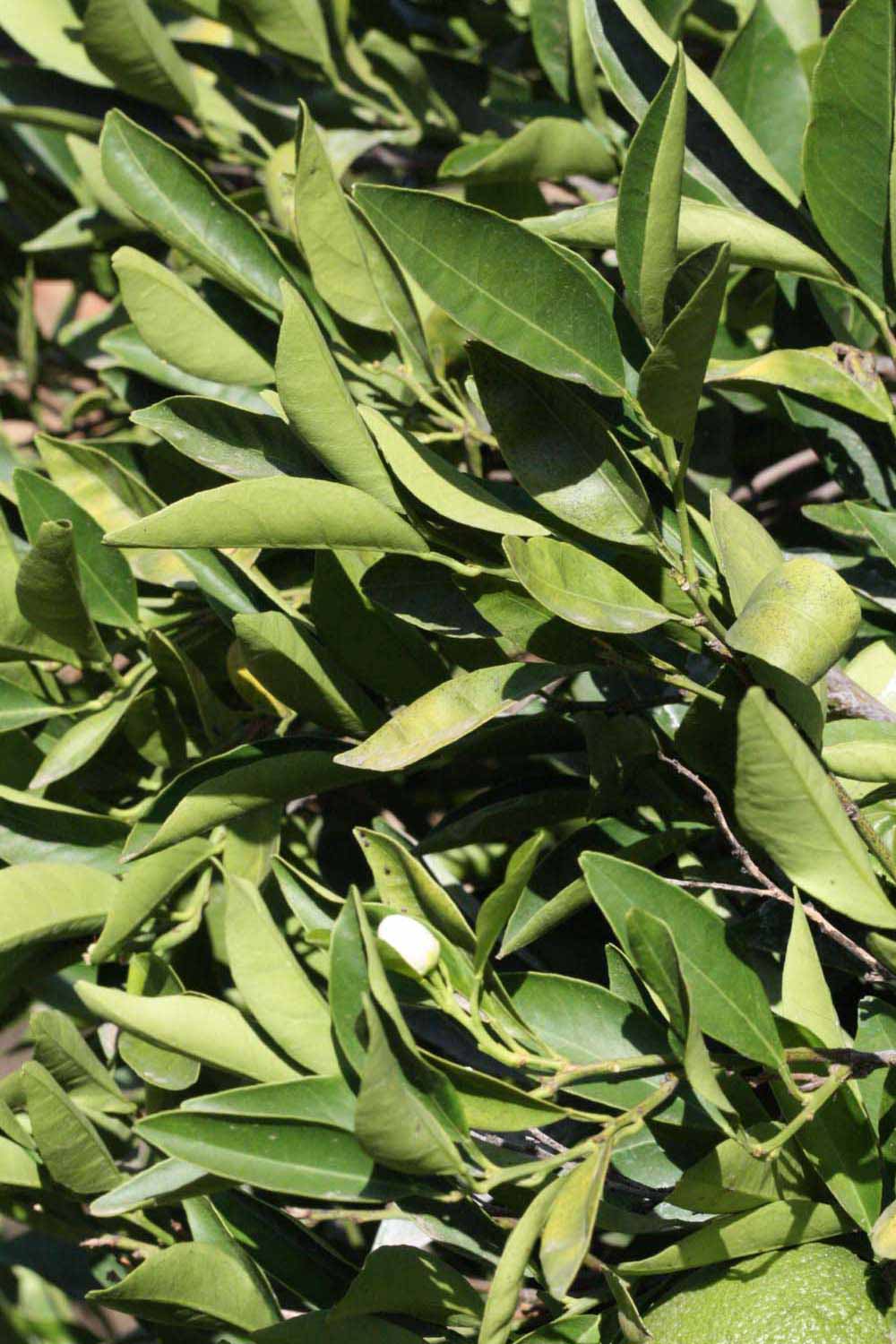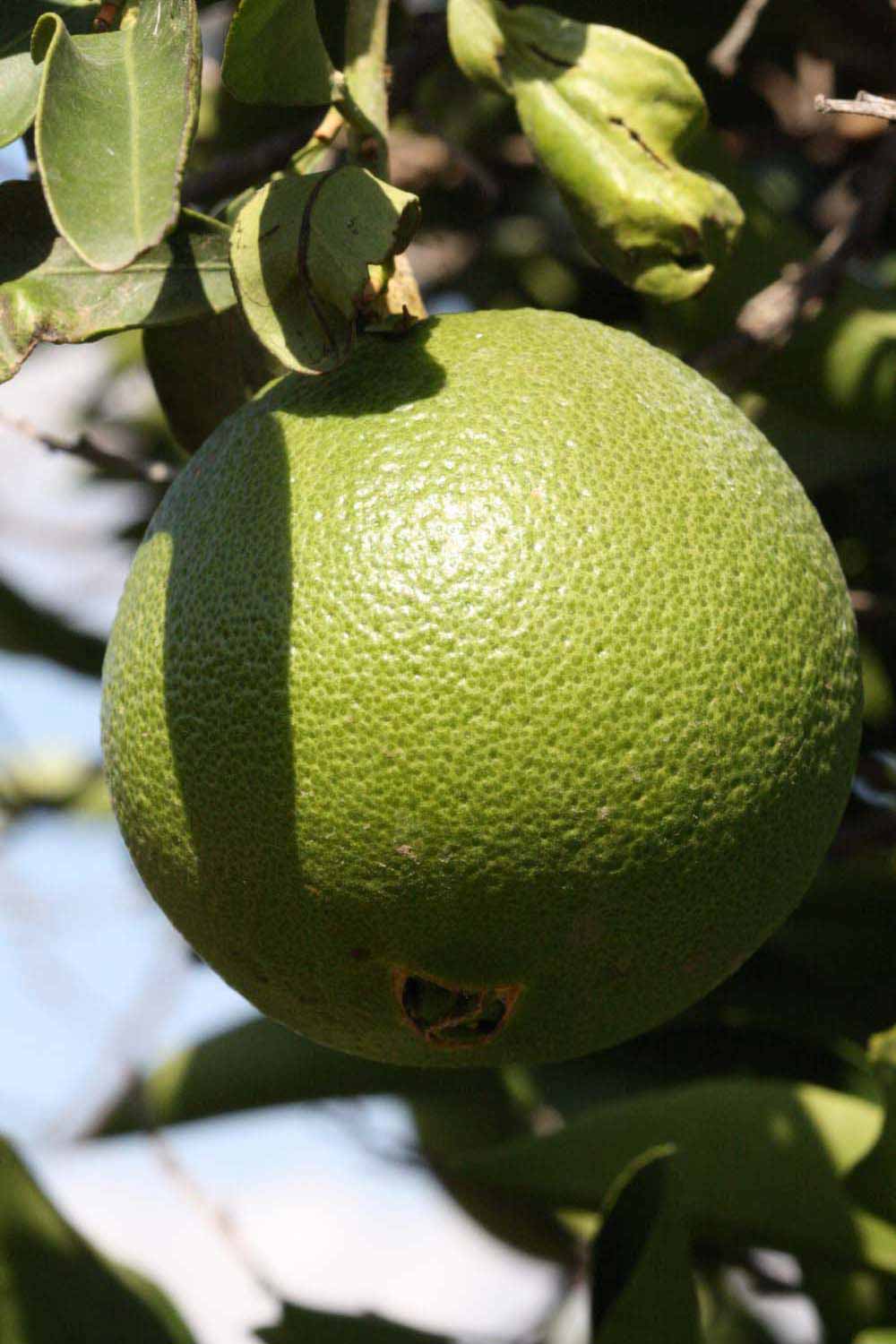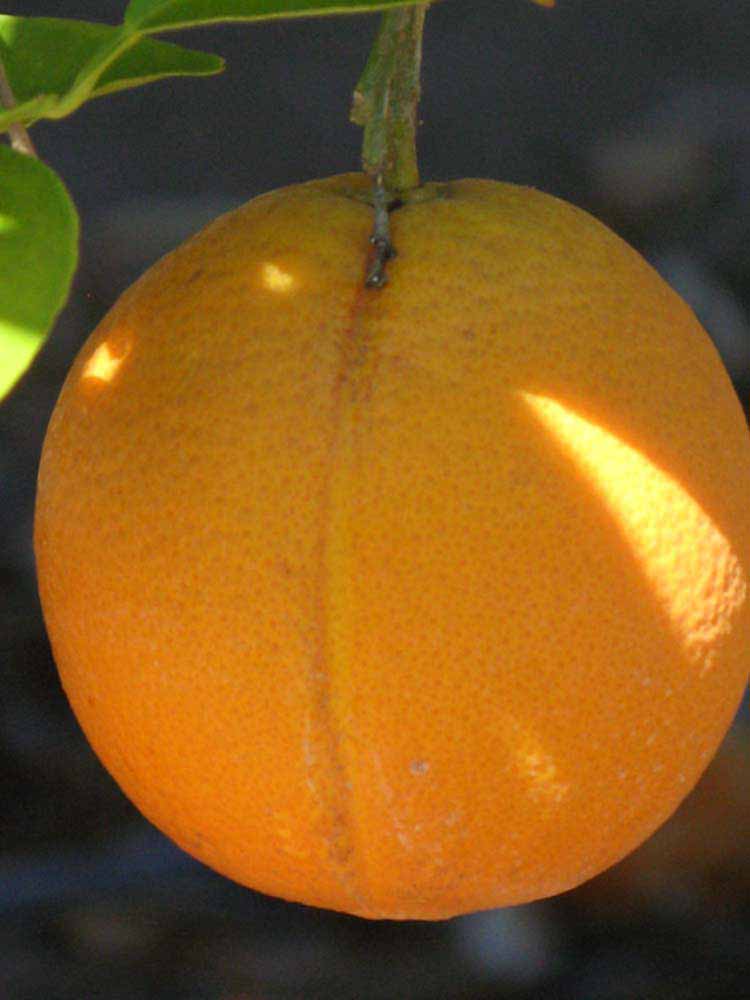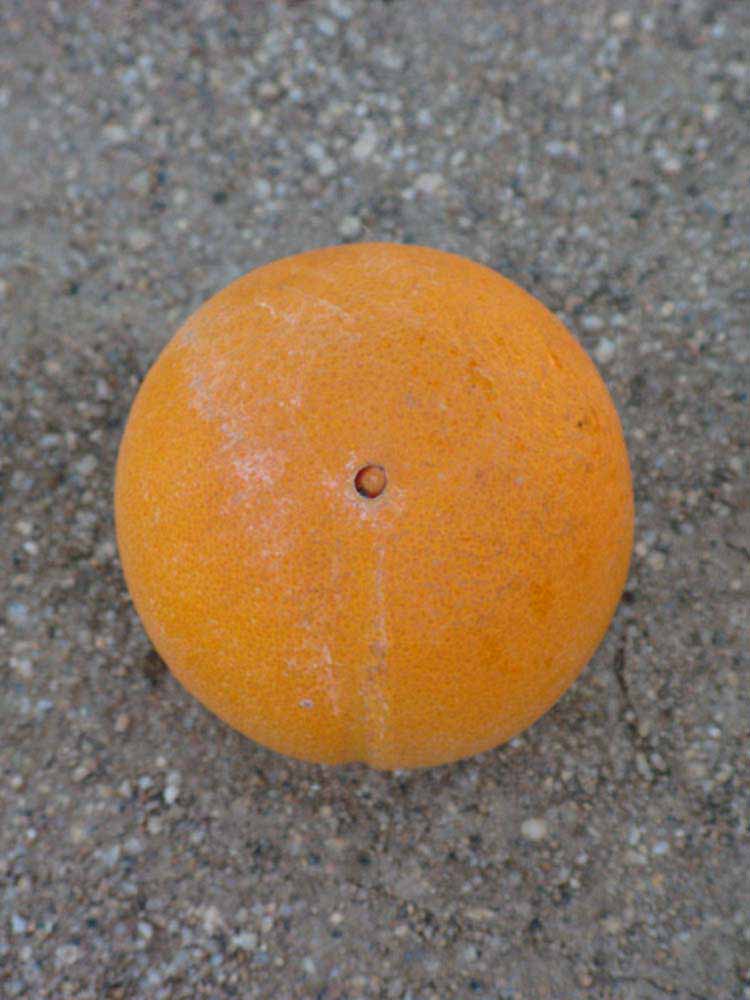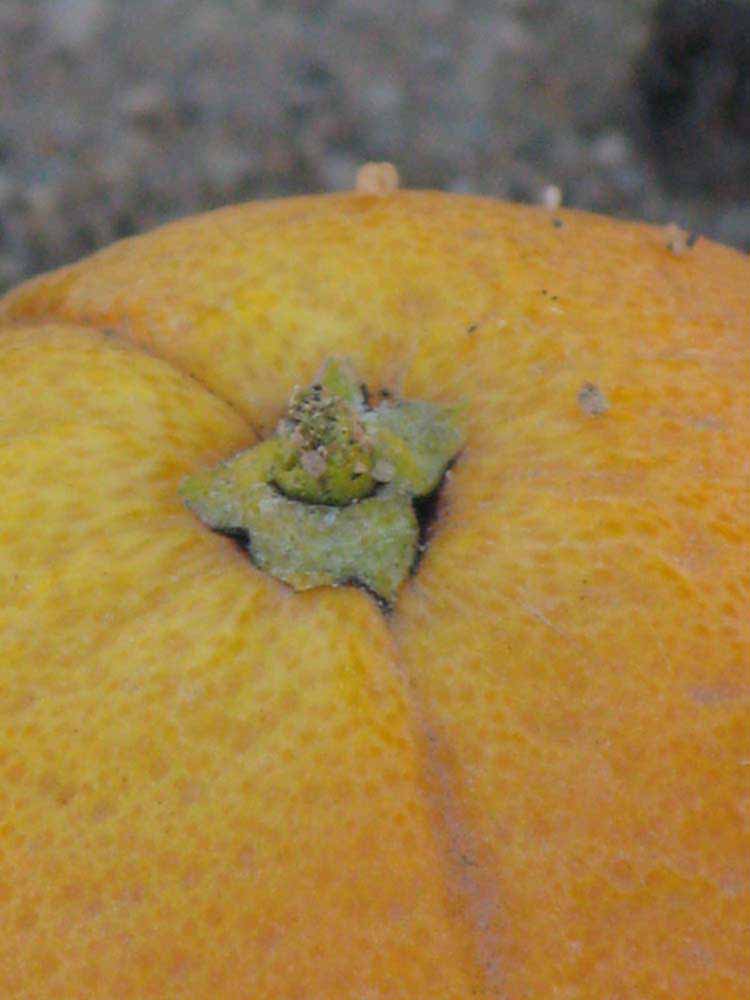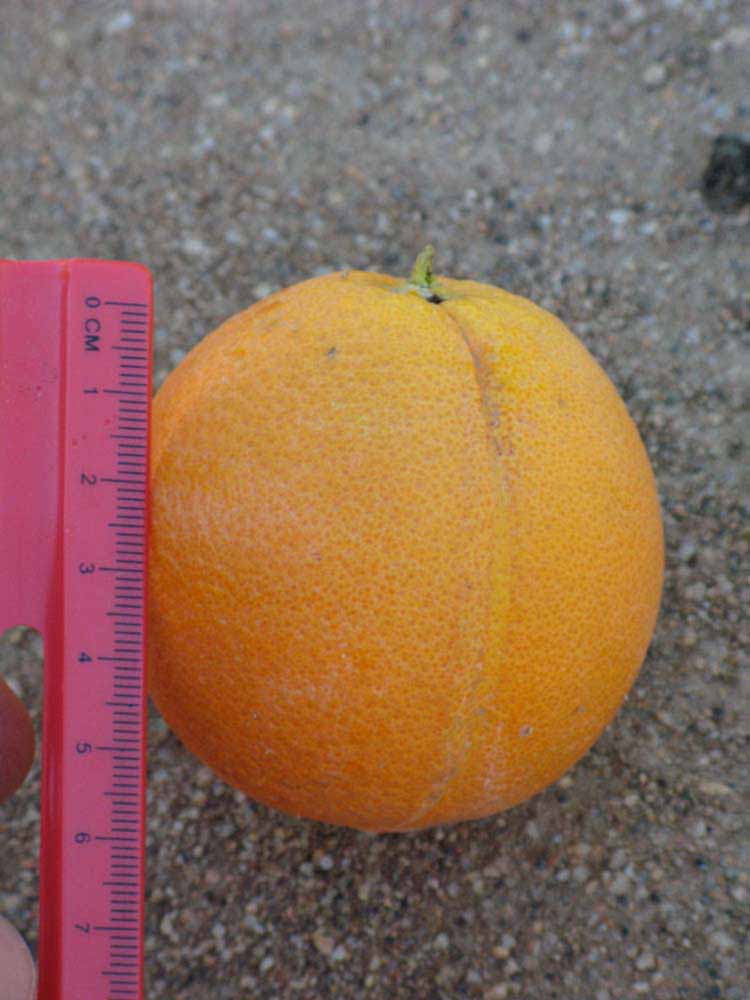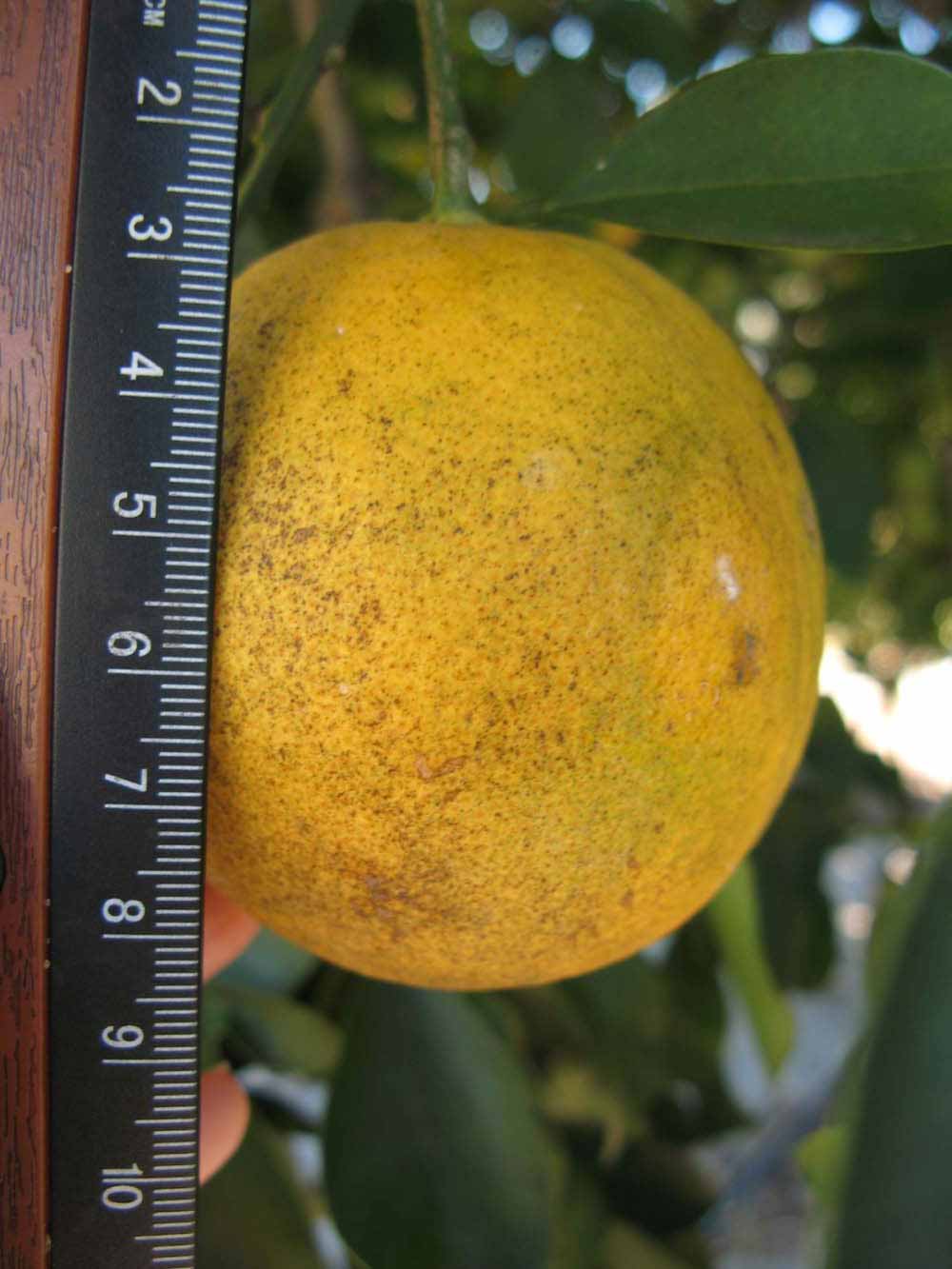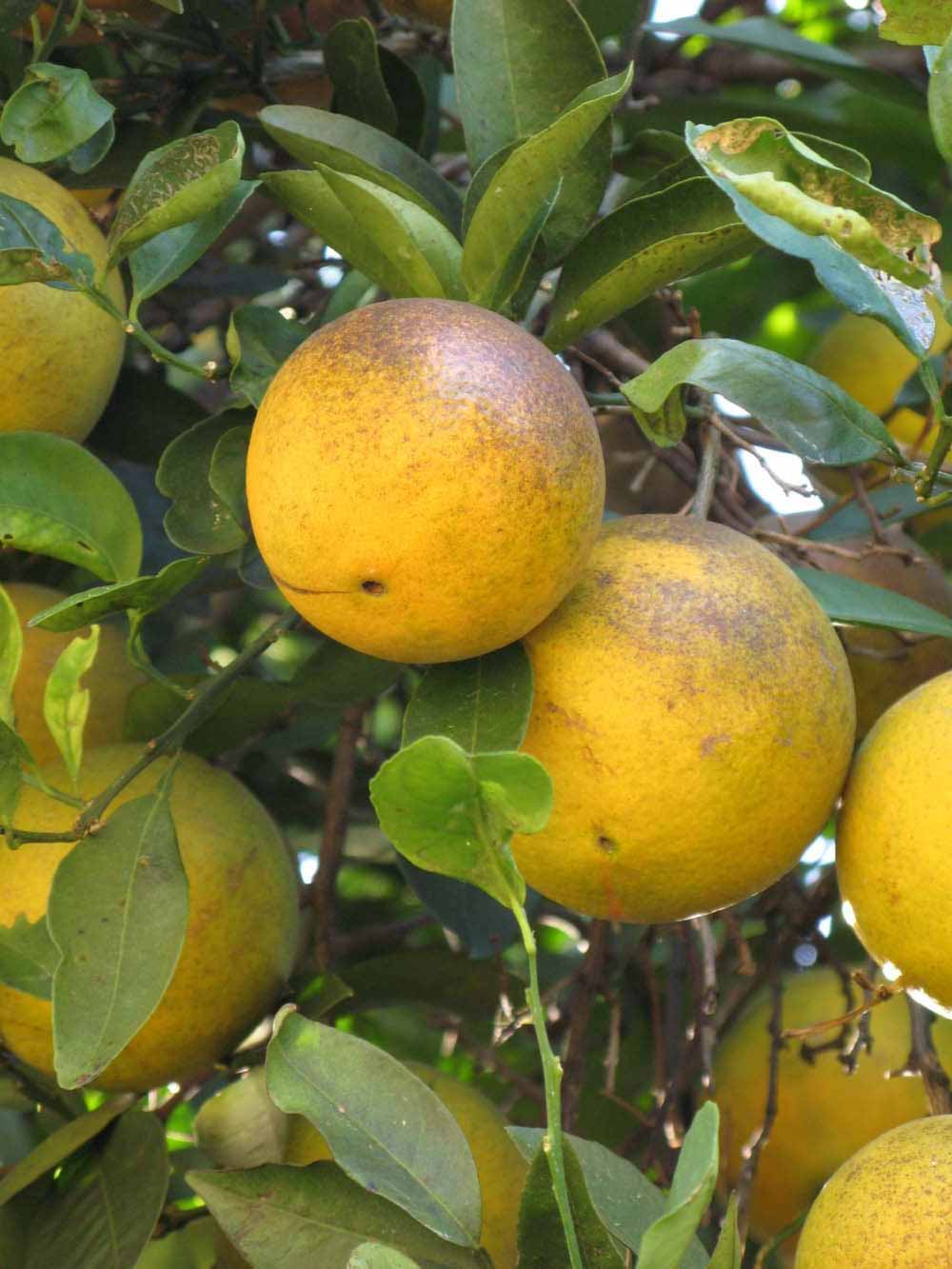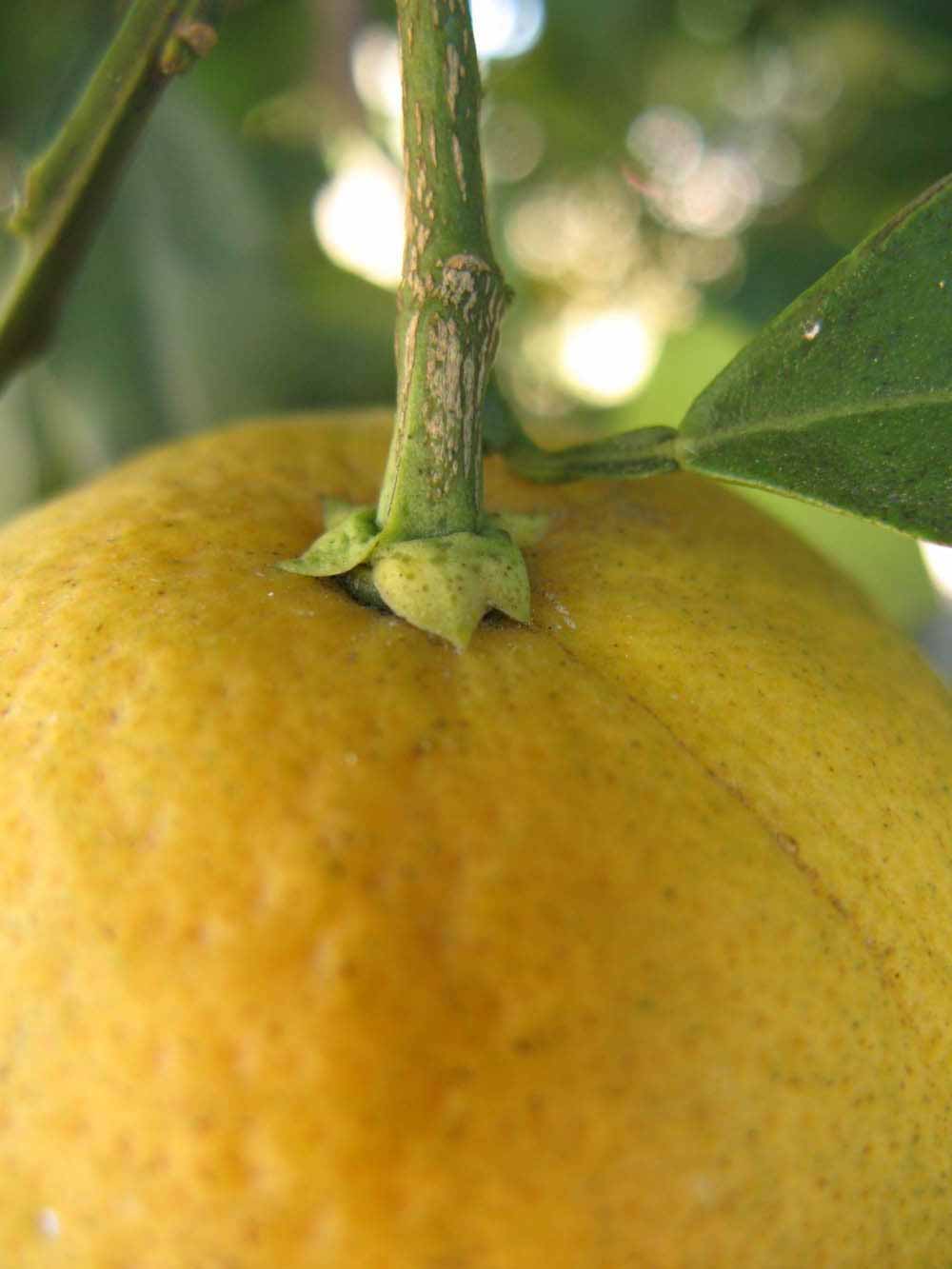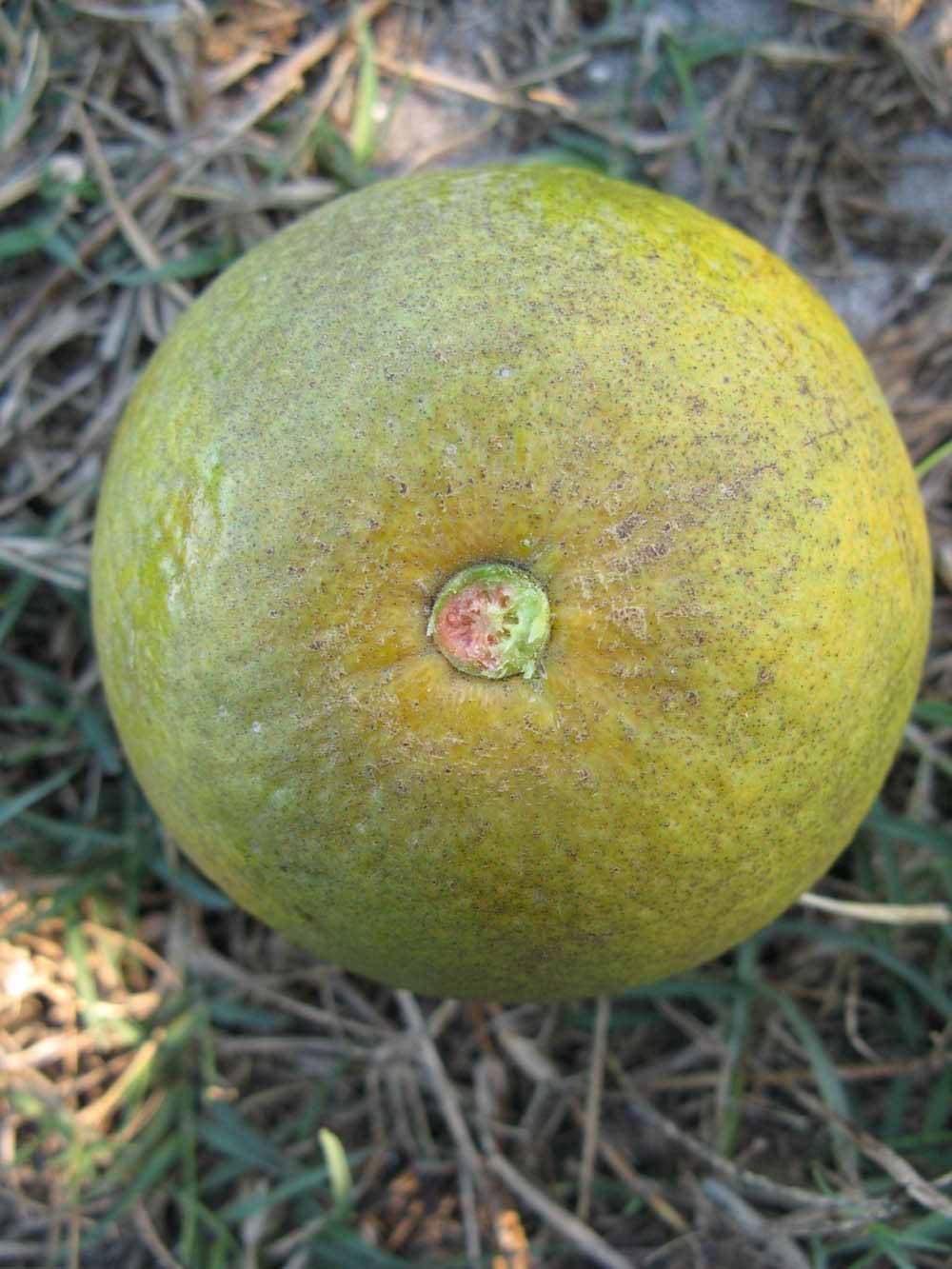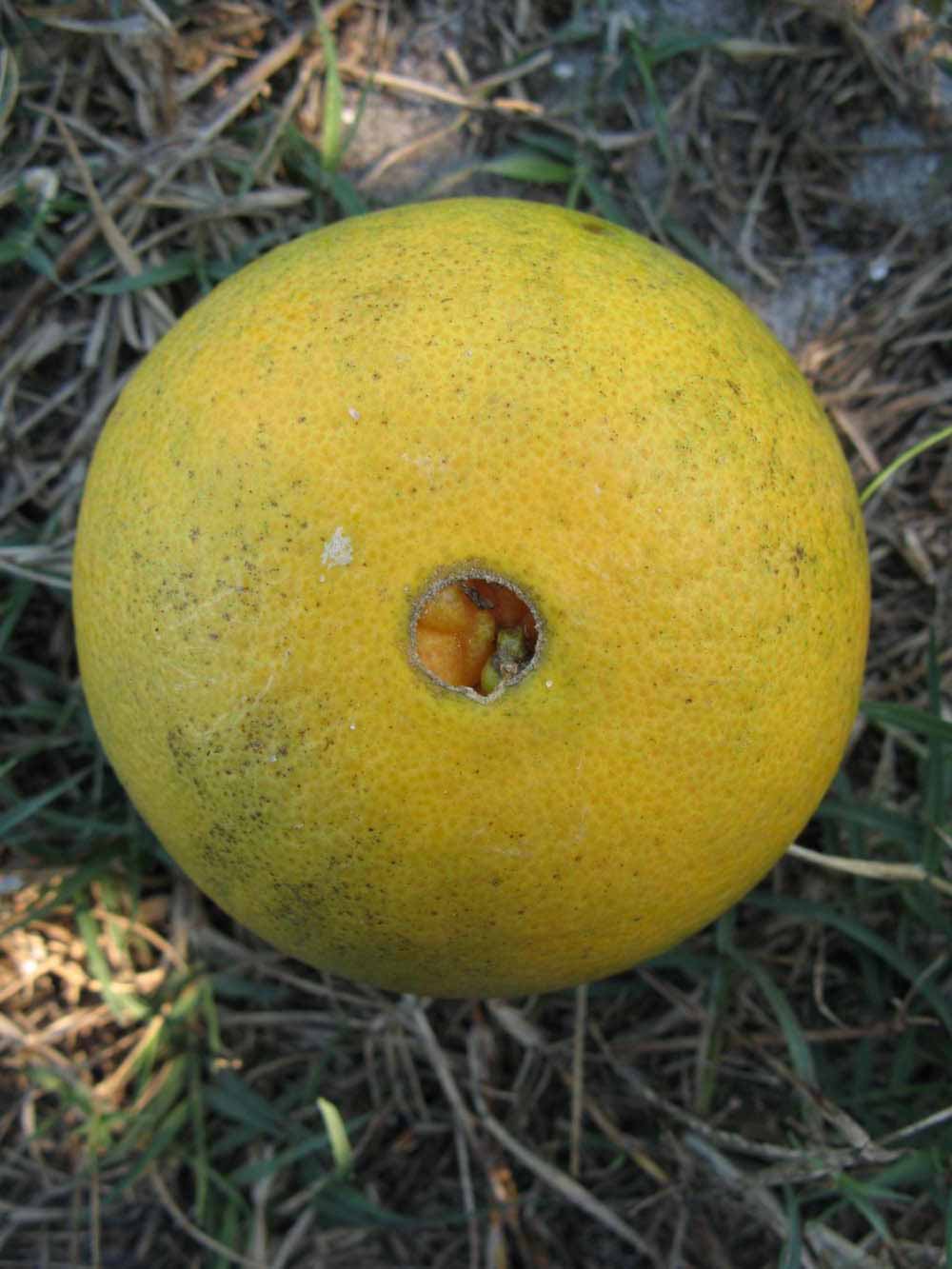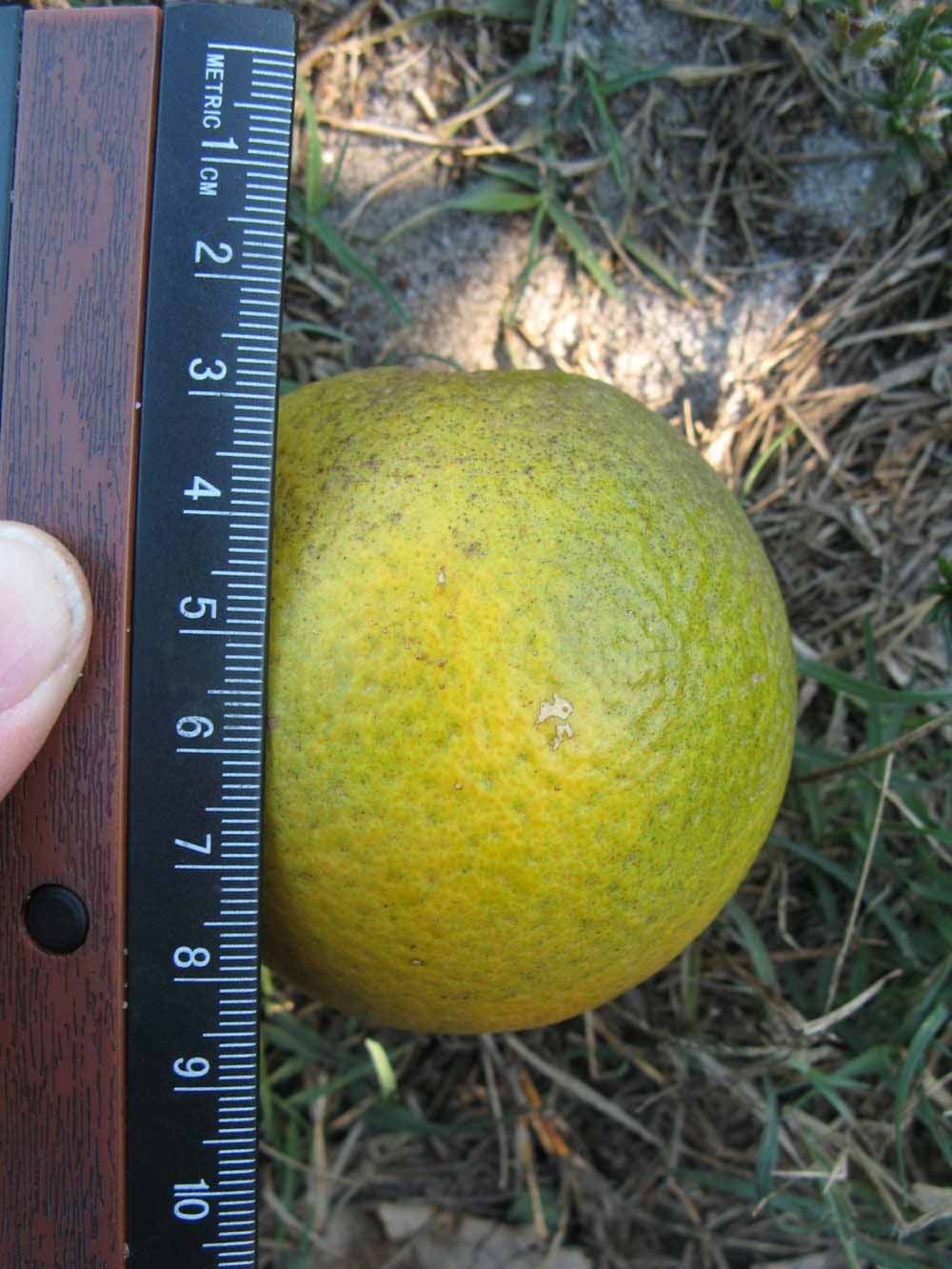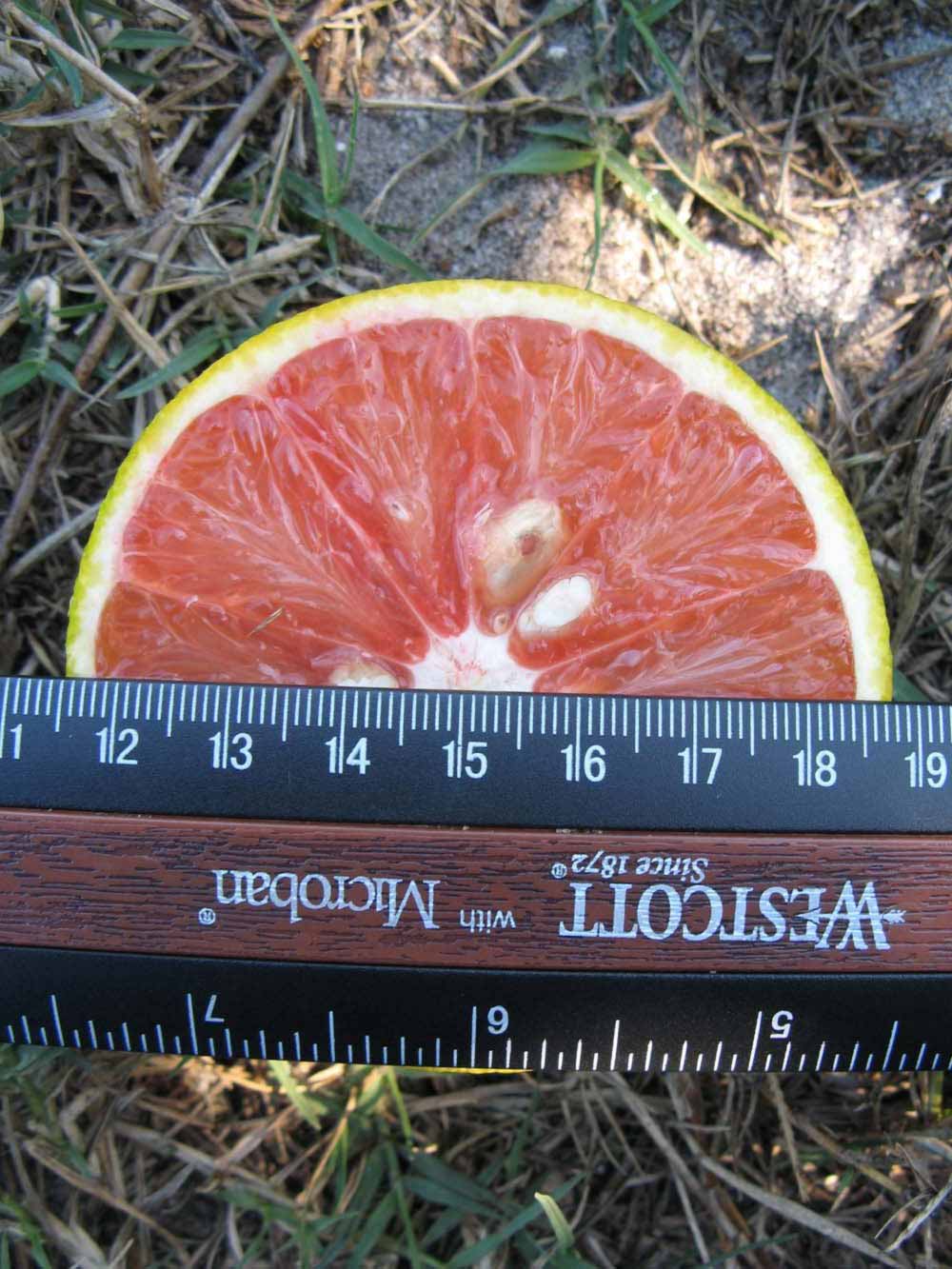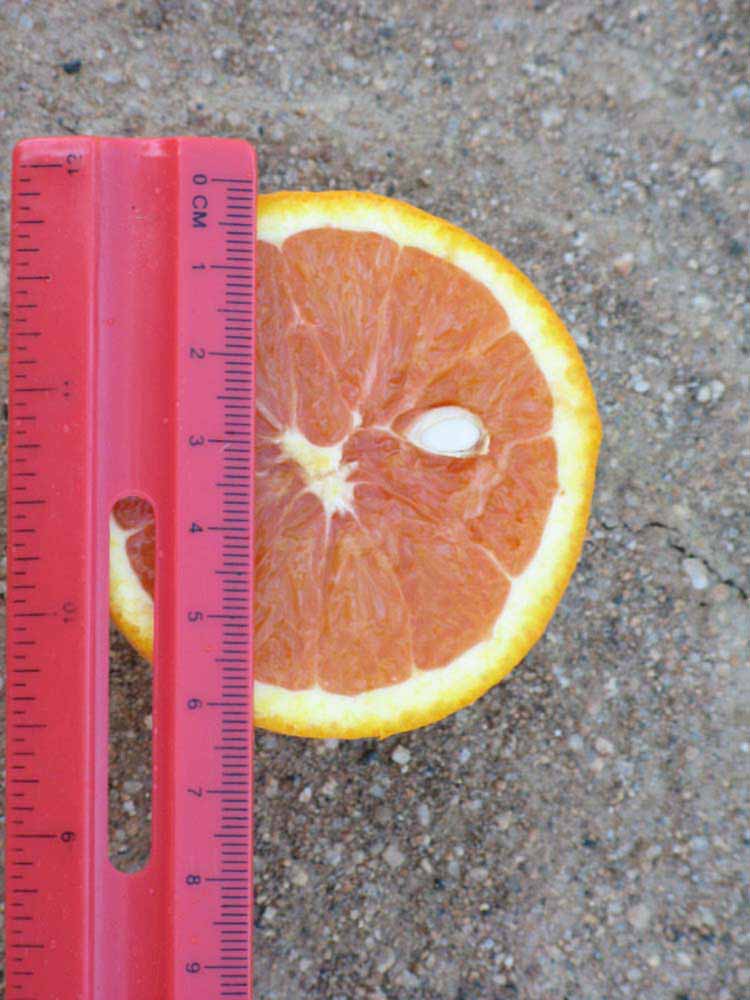卡拉卡拉(甜橙) Cara Cara
Synonyms
Red Navel (sec. Cottin 2002)
Cultivar or taxon
Citrus x aurantium L., pro sp. [Sweet Orange Group] (sensu Mabberley 1997, Bayer et al. 2009); Citrus sinensis (L.) Osbeck (sensu Swingle and Reece 1967; sec. Tanaka sec. Cottin 2002)
Origin
The Chiefland Budwood Facility (2010) provided the following notes on the cultivar (clone DPI-104): "Is a red-fleshed navel introduced by the USDA. Discovered by E. P. Du Charme in 1976 at Hacienda Cara Cara in Venezuela. The Cara Cara name is interpreted as beloved in Italian....Released in 1987....Season: Early, November-January"
Description
Crown compact or dense, not weeping. First-year twig surface glabrous; second- or third-year twig surface striate; thorns straight; prickles absent or not persistent. Petiole glabrous, length short or medium; wings narrow or medium, adjoining the blade. Leaflets one, margin entire or bluntly toothed, shade leaflet blades flat, sun leaflet blades weakly or strongly conduplicate. Scent of crushed leaflets sweetly orange-like. Fruit as broad as long or longer than broad; rind yellow (7-10), yellow-orange (11), orange (12), or red-orange (13); rind texture slightly rough (4-5); firmness leathery; navel present; flesh orange or red/purplish-tinged; taste acidic-sweet.
Notes
The Chiefland Budwood Facility (2010) provided the following notes on the cultivar (clone DPI-104): "Trees tend to have occasional variegated foliage....Color holds well without fading, lower acidity."
References
Bayer, R.J., D.J. Mabberley, C. Morton, C.H. Miller, I.K. Sharma, B.E. Pfeil, S. Rich, R. Hitchcock, and S. Sykes. 2009. A molecular phylogeny of the orange subfamily (Rutaceae: Aurantioideae) using nine cpDNA sequences. American Journal of Botany 96: 668–685.
Chiefland Budwood Facility. 2010. 2010 Annual report July 1, 2009 - June 30, 2010. Bureau of Citrus Budwood Registration, Florida Department of Agriculture & Consumer Services, Winter Haven.
Cottin, R. 2002. Citrus of the World: A citrus directory. Version 2.0. France: SRA INRA-CIRAD.
Mabberley, D.J. 1997. A classification for edible Citrus (Rutaceae). Telopea 7: 167–172.
Swingle, W.T. and P.C. Reece. 1967. The botany of Citrus and its wild relatives. In: Reuther, W., H.J. Webber, and L.D. Batchelor (eds.). The Citrus industry. Ed. 2. Vol. I. University of California, Riverside. http://lib.ucr.edu/agnic/webber/Vol1/Chapter3.html.
Resources
Search for this cultivar in NCBI Entrez, NCBI Nucleotide, or NCBI Expressed Sequence Tags
Additional information on this cultivar at University of California: Riverside Citrus Variety Collection
|
Habit (Riverside, CA) |
Habit (Riverside, CA) |
Habit (Riverside, CA) |
Habit (Winter Haven, FL) |
Bark (Riverside, CA) |
|
Bark (Riverside, CA) |
First year twig (Riverside, CA) |
Second - third year twig (Riverside, CA) |
Second - third year twig with thorn (Riverside, CA) |
Petiole (Winter Haven, FL) |
|
Petiole (Riverside, CA) |
Unifoliolate leaf (Riverside, CA) |
Unifoliolate leaf (Riverside, CA) |
Unifoliolate leaf (Riverside, CA) |
Unifoliolate leaf (Winter Haven, FL) |
|
Unifoliolate leaf (Winter Haven, FL) |
Unifoliolate leaf (Winter Haven, FL) |
Margin (Riverside, CA) |
Margin (Riverside, CA) |
Margin (Riverside, CA) |
|
Margin (Riverside, CA) |
Margin (Winter Haven, FL) |
Shade leaves (Riverside, CA) |
Shade leaves (Riverside, CA) |
Shade leaves (Winter Haven, FL) |
|
Shade leaves (Riverside, CA) |
Sun leaves (Riverside, CA) |
Sun leaves (Riverside, CA) |
Sun leaves (Riverside, CA) |
Sun leaves (Riverside, CA) |
|
Sun leaves (Riverside, CA) |
Immature fruit (Riverside, CA) |
Fruit (Riverside, CA) |
Fruit (Riverside, CA) |
Fruit (Riverside, CA) |
|
Fruit (Riverside, CA) |
Fruit (Winter Haven, FL) |
Fruit (Winter Haven, FL) |
Fruit (Winter Haven, FL) |
Fruit (Winter Haven, FL) |
|
Fruit (Winter Haven, FL) |
Fruit (Winter Haven, FL) |
Fruit (Riverside, CA) |
Fruit (Riverside, CA) |
Fruit cross-section (Winter Haven, FL) |
|
Fruit cross-section (Riverside, CA) |
